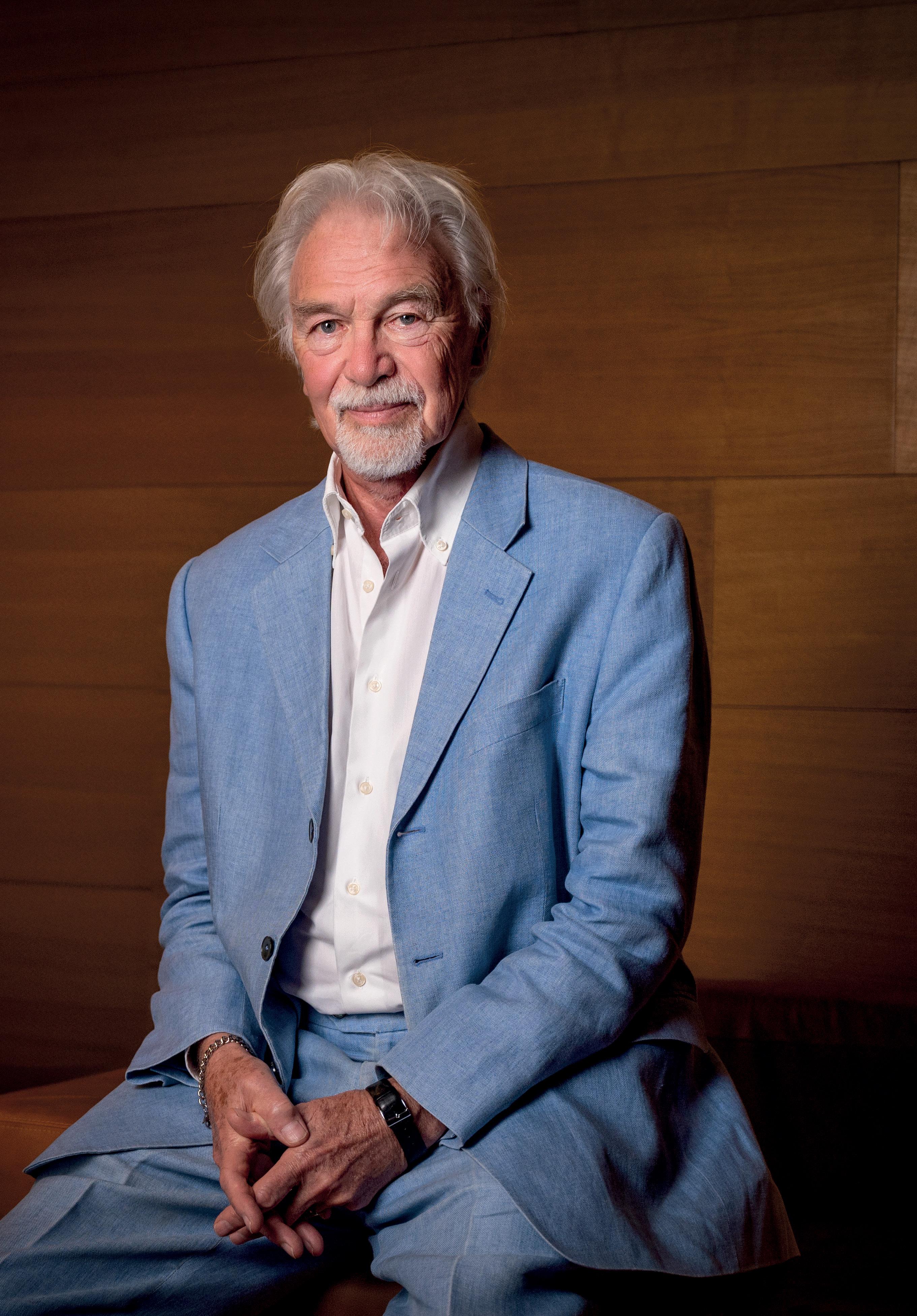

FOR THE CONSTRUCTION SPECIALIST 112 MAY 2024 Licensed by Dubai Development Authority Responding to our Clients’ Dreams
Johnson on architecture,
GIGA-PROJECTS
larger scale mean there’s a larger risk profile? SETTLEMENT
Dweik and George Matta of TBH talk Dispute Resolution URBAN PLANNING Parsons’ Faysal Ali on the astonishing new realities
Brian
attitudes & Godwin Austen Johnson
Does
Dina





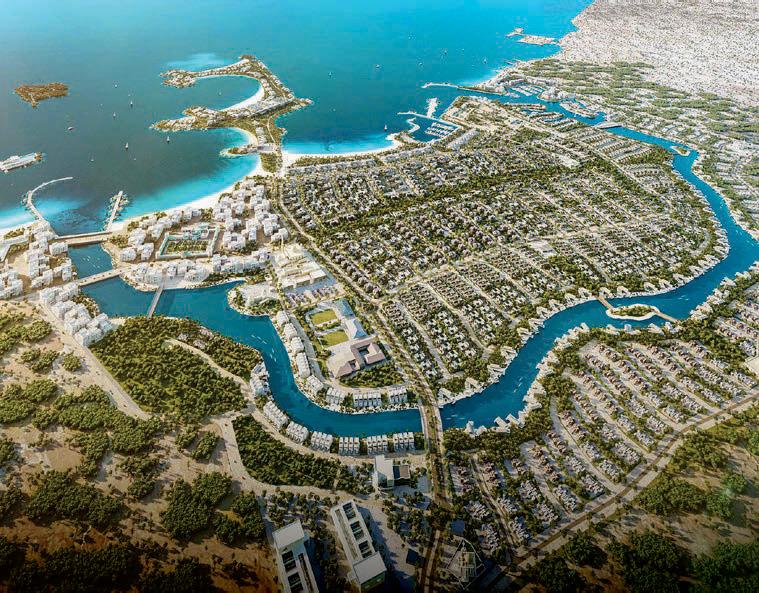

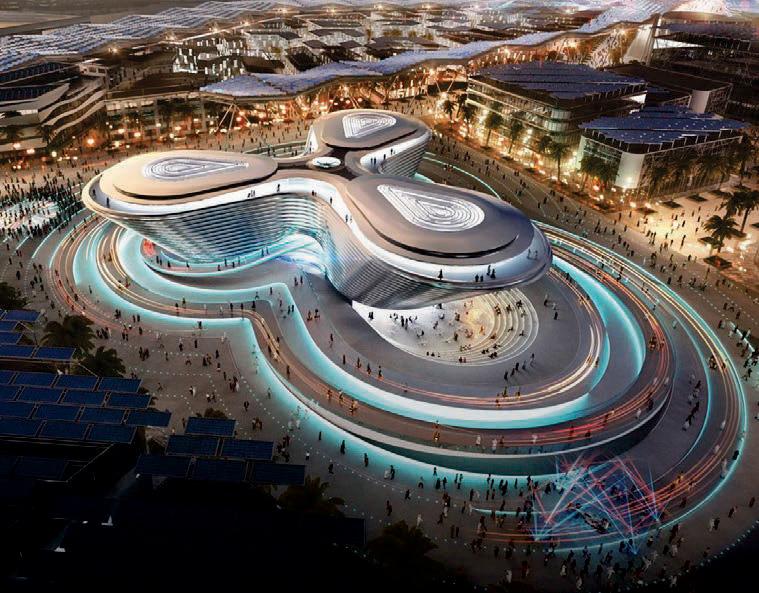




2015, 2016, 2018, 2019, 2020, 2021, 2022 & 2023 COST CONSULTING COMPANY OF THE YEAR COMPANY OF THE YEAR 2021
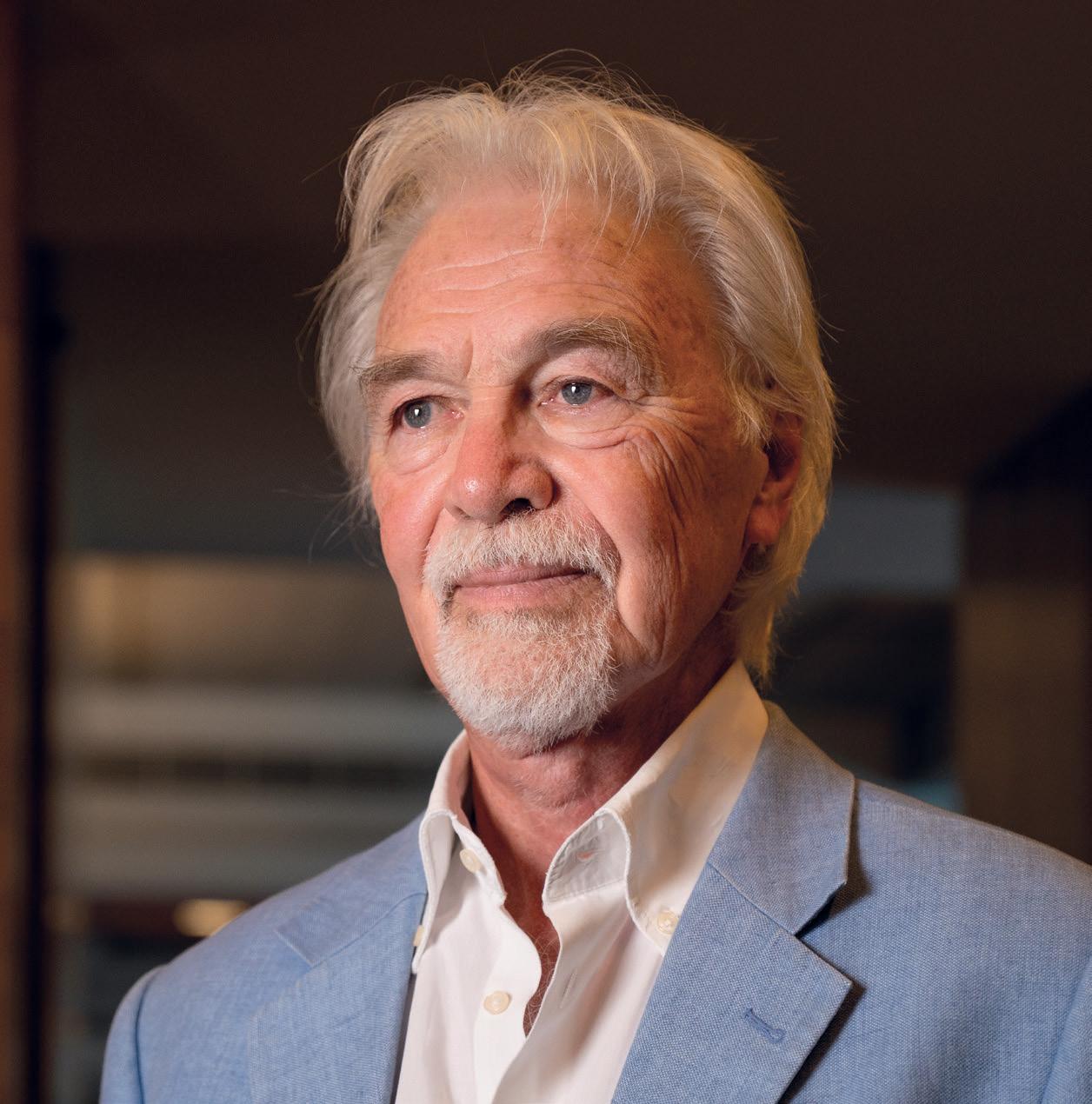
On Topic
MEA fit-out market review
Middle East Consultant takes a look at JLL’s new EMEA Fit-Out Cost Guide 2024 - designed to provide insights into the latest trends and cost of fitting out office spaces in the region

“Architecture is a humanity, not a science”
The opportunities and project openings that characterise Brian Johnson’s career have led to an extraordinary raft of client assignments, while his company, Godwin Austen Johnson has a peerless reputation across key sectors, particularly education and hospitality
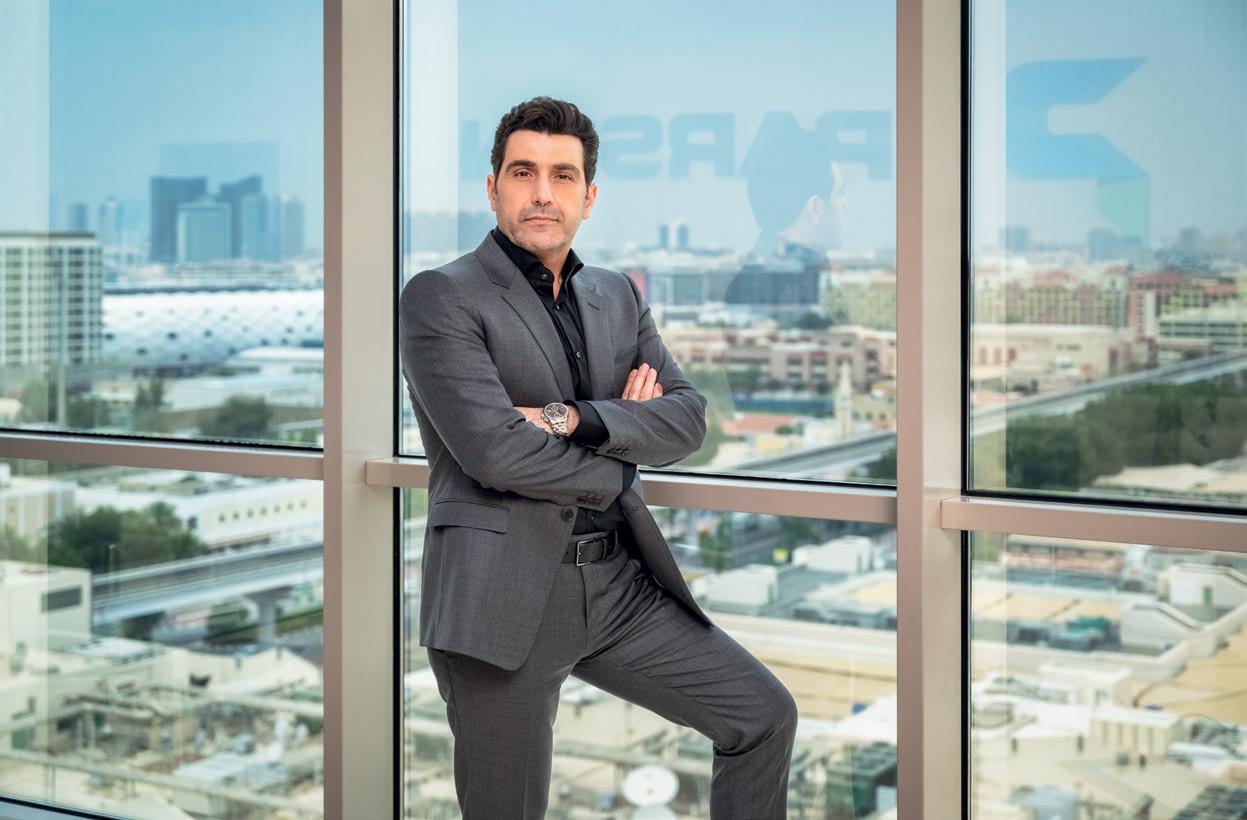
The new realities of urban planning
At a time when we hear more and more about the shift towards communityfocused, regional hubs, what are the realities of these new paradigms?
ME Consultant spoke to Faysal Ali, Vice President - Design and Planning Studio, Parsons about the new urban futures we are destined to be a part of…
meconstructionnews.com May 2024 Contents | 01 Close-up
In Practice
12 16 08
May 2024 Issue 112

The workplace and the day after tomorrow
Neetu Choudhary describes the latest shifting workplace dynamics and the realistic next steps that organisations need to implement
In Practice
“Our main strength is the client relationship”
George Matta, Director & Partner, TBH, and Dina Dweik, Senior Associate, TBH, discuss the regional industry’s opportunities and new horizons…
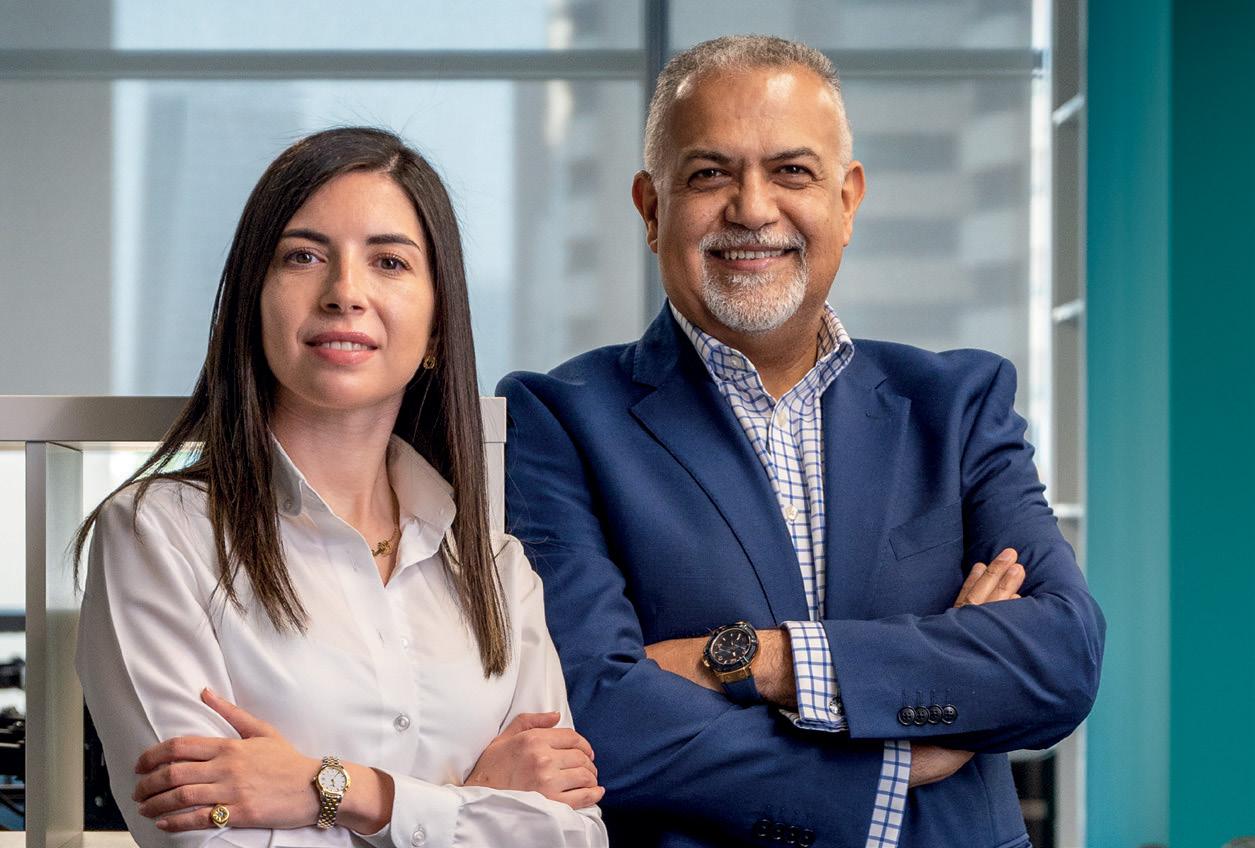

In Practice
Risk hotspots in giga-projects
World-leading risk management author Joseph Brewer - author of ‘When Mega goes GIGA’ - identifies a raft of contingent risks when working on giga-projects, and what to do about them…
Diversity Cultural Intelligence & Client Consultancy
Emma Jordaan, CEO, Infinite Consulting, explains what (and what not!) to do when dealing with client interactions

meconstructionnews.com May 2024 02 | Contents
44
Diversity
38 22 26

The shape of the Future…
Despite having been in the media and events sector for more than 30 years, I can barely remember an event that has attracted so much advance attention as the Future of Architecture Summit, taking place on 12th June.
My feeling is that this comes partly from the way that so many apparently nonarchitectural firms are now ‘joining the party’; they’re increasingly acquiring advanced design skills via the advent of generative AI packages. This is indeed the heyday of the multi-disciplined engineering firm.
We also have the fact that there has been so much talk about how urban planning has ‘flipped upside-down’; there is the seachange away from creating vast metropolises from scratch on the drawing board, to the quest for more accessible, mixed-use regional hubs. The era of the ‘Brasilias’ has, simply, gone out of style.
Along with this, of course, we’re also seeing the shift away from creating a commercial hub at the core of cities, which is reached by bustling, overcrowded superhighways, back to the idea of civic ‘suburbs’, where regional hubs are easilyaccessible on the less-crowded outskirts of an existing city.
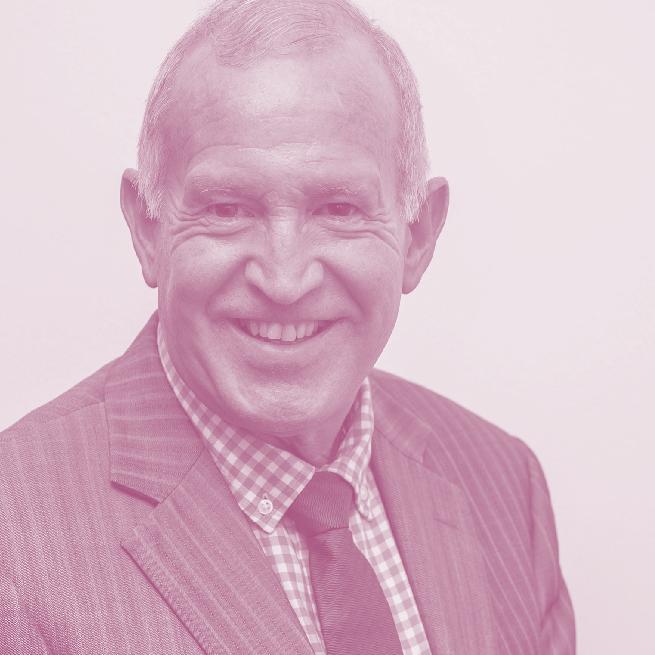
These dynamics feature, of course, as themes at our Summit, along with three other key topics, which are –
• A focus on future materials: the growing use of nano-fibres and artificially-grown organics. Will architects be following the aerospace sector and soon be partially replacing traditional materials?
• The way that Smart data and AI are transforming our ability to create bespoke interiors and our understanding of the optimum use of internal space
• The trend towards mixed-use communities: is this in fact driven less by the appeal of a lifestyle setting than by the reality that the developers and investors can save on infrastructure costs?
To register your attendance, please see the link on our website - https://2024. foasummit.com/
I promise you a day of the very best debates, and it’s no accident that there will be several sections where we pitch architects and new-generation engineers head-to-head. See you there!
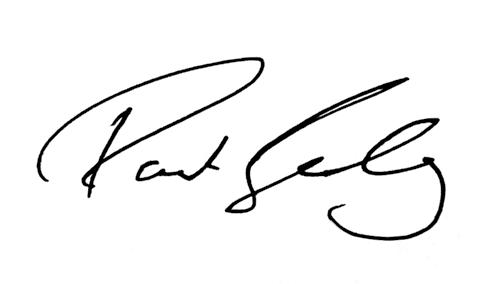 Editor, Middle East Consultant
Editor, Middle East Consultant
Group
MANAGING DIRECTOR
RAZ ISLAM raz.islam@cpitrademedia.com
+971 4 375 5471
MANAGING PARTNER
VIJAYA CHERIAN vijaya.cherian@cpitrademedia.com
+971 4 375 5713
DIRECTOR OF FINANCE & BUSINESS OPERATIONS
SHIYAS KAREEM shiyas.kareem@cpitrademedia.com
+971 4 375 5474
PUBLISHING DIRECTOR ANDY PITOIS andy.pitois@cpitrademedia.com
+971 4 375 5473
Editorial
EDITOR PAUL GODFREY paul.godfrey@cpitrademedia.com +971 4 375 5470
Design
ART DIRECTOR
SIMON COBON
GRAPHIC DESIGNER
PERCIVAL MANALAYSAY
PHOTOGRAPHER
MAKSYM PORIECHKIN
Circulation & Production
DATA & PRODUCTION MANAGER
PHINSON MATHEW GEORGE phinson.george@cpitrademedia.com +971 4 375 5476
Marketing & Events
EVENTS EXECUTIVE
MINARA SALAKHI minara.s@cpitrademedia.com +971 4 433 2856
EVENTS EXECUTIVE
PRIYANKA RAINA priyanka.raina@cpitrademedia.com
Web Development
ABDUL BAEIS
UMAIR KHAN
FOUNDER
DOMINIC DE SOUSA (1959-2015)
Published by
May 2024 meconstructionnews.com
04 | Welcome
The publisher of this magazine has made every effort to ensure the content is accurate on the date of publication. The opinions and views expressed in the articles do not necessarily reflect the publisher and editor. The published material, adverts, editorials and all other content are published in good faith. No part of this publication or any part of the contents thereof may be reproduced, stored or transmitted in any form without the permission of the publisher in writing. Publication licensed by Dubai Development Authority to CPI Trade Publishing FZ LLC. Printed by Al Salam Printing Press LLC. CPI Trade Media. PO Box 13700, Dubai, UAE. +971 4 375 5470 cpitrademedia.com © Copyright 2024. All rights reserved.

© 2024 CPI Trade Media. All rights reserved. Content Paul Godfrey +971 55 472 9717 paul.godfrey@cpitrademedia.com Sponsorship Andy Pitois +971 4 375 5473 andy.pitois@cpitrademedia.com 2024.foasummit.com PRESENTED BY SUPPORTING PARTNER ENDORSED BY PRESENTED BY SUPPORTING PARTNER STRATEGIC SPONSOR PRESENTED BY for more Details Scan here 12 June 2024 HABTOOR GRAND RESORT JBR / DUBAI / UAE Empowering progressive change with touchstone, informed debate and an industry-leading gala Awards SUPPORTING PARTNER

Emerge

Alstom

Arada






May 2024 meconstructionnews.com 06 | On Topic LATEST NEWS FEATURES
ENERGY
to deliver solar energy facility for Dubai Maritime City CONSTRUCTION
awards $168mn in contracts for construction of 565 homes INFRASTRUCTURE
APM
calls for bids
Steel to supply track for Egypt’s Green Line EVENT: Future of Architecture Summit & Awards to be held on 12 June ANALYSIS: Construction costs in the Middle
set to rise by up to 7% in 2024 INTERVIEW:
REGISTER NOW 12th June 2024 Habtoor Grand Resort JBR Empowering progressive change with touchstone, informed debate and an industry-leading gala Awards FOA SUMMIT & AWARDS 2024_LEADERBOARD 728x90_PRINT.indd 1 26/04/2024 11:24 AM
lands Jeddah Airport
upgrade contract CONSTRUCTION Peel Ports Group
for works across portfolio INFRASTRUCTURE British
East
Building the Blueprint for a Sustainable Tomorrow
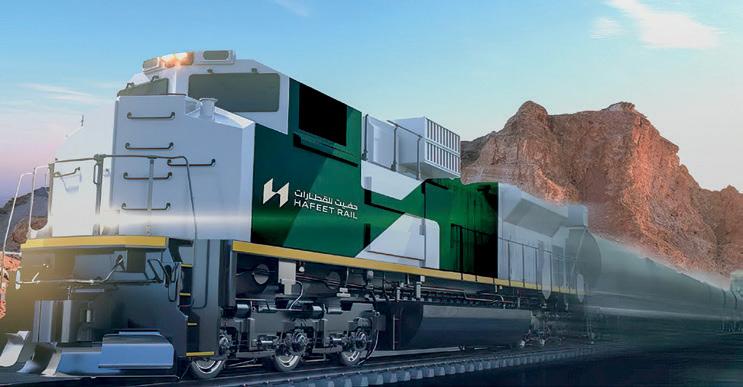


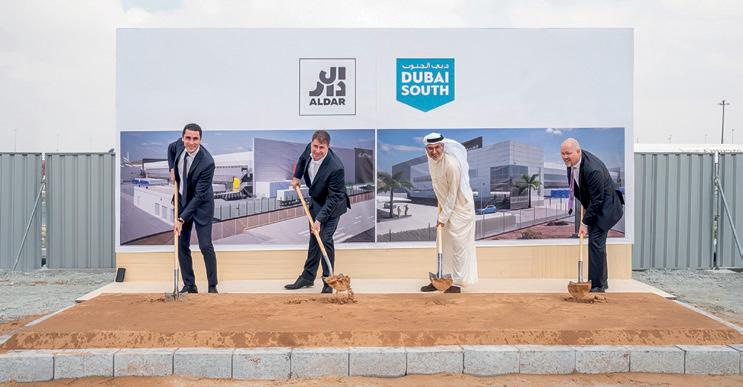

INFRASTRUCTURE
Implementation phase of railway project between Oman and UAE begins
The project will have a major impact on passenger and cargo movement between the two countries
FINANCIAL
Dubai’s Department of Finance approves $10bn in PPP projects
The CPF programme for managing the PPP ecosystem performance within the Government of Dubai revolves around five strategic objectives
CONSULTANT
WSP Middle East launches Real Estate Advisory services in the region
New entity backed by $4bn funding from Abu Dhabi titan and local investment consortium


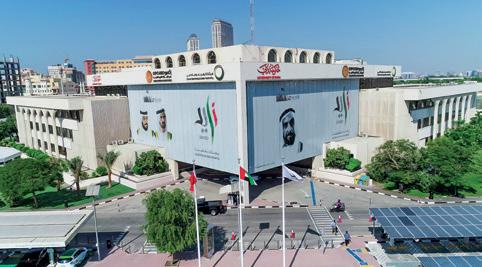
CONSTRUCTION
Dubai South and Aldar break ground on new logistics facility
The facility is expected to be completed by the end of 2024

CONSTRUCTION
CONSTRUCTION
RFPs announced for Bahrain residential project
Category ‘A’ consultants invited to bid for Phase 3 of kingdom’s flagship housing development


CONSTRUCTION
May 2024 meconstructionnews.com On Topic | 07 MOST POPULAR FEATURED NEWS REGISTER NOW 26th June 2024 Habtoor JBR / Dubai / UAE Celebrating the projects, teams, and individuals supporting innovation and technology in the built environment DIGITAL CONSTRUCTION AWARDS 2024_LEADERBOARD 728x90_PRINT.indd 4 26/04/2024 11:18 AM
DEWA and Acwa Power announce financial close on 180 MIGD RO desalination plant
Egis to oversee rebuilding of historic Kuwait souq
Waja Company to set-up e-car factory in Egypt
New edition of DEWA Infrastructure manual launched
CONSTRUCTION Hassan Allam subsidiary wins new Amaala Triple Bay contract
MEA fit-out costs remains resilient with marginal 3% YoY increase amid rising global trend
Middle East Consultant takes a look at JLL’s new EMEA Fit-Out Cost Guide 2024 - designed to provide insights into the latest trends and cost of fitting out office spaces in the Middle East and Africa region

hile average fit-out costs across global markets have risen significantly yearon-year amid ongoing cost challenges and a complex macroeconomic environment, the construction sector in the Middle East and Africa (MEA) region has distinguished itself with its continued resilience, making an average 3% YoY increase across the region, according to JLL’s new EMEA Fit Out Cost Guide 2024.
With mega and giga infrastructure projects on the rise in the Middle East, construction is cited to ramp up from 2025 leading to an increase in demand and construction spending in the wider region for several years.
The EMEA Fit-Out Cost Guide 2024, which reviewed cost data collated from 25 countries across EMEA, expects the construction industry to stabilise as the year progresses despite ongoing pressures dovetailed in an upsurge in demand for sustainable, high-quality, tech-enabled
meconstructionnews.com May 2024
08 | On Topic
Supply gaps in regional markets are driving more and more enthusiasm for upscale fit-outs.

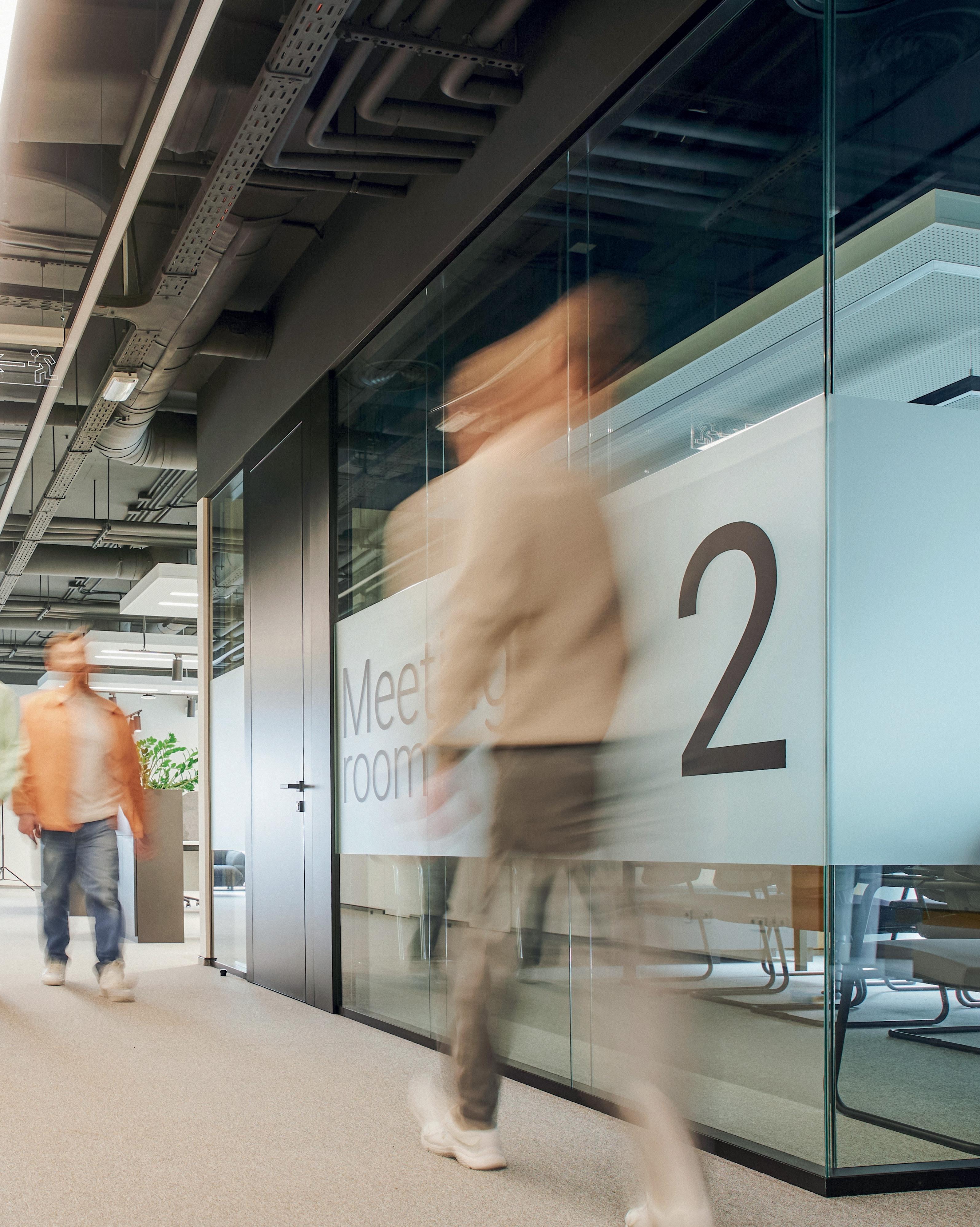
May 2024 meconstructionnews.com On Topic | 09
office spaces continuing to impact costs. Overall, the macroeconomic outlook for the MEA region remains positive regardless of the prevailing geopolitical uncertainty and high development costs. Supply gaps in high-quality, office spaces in desirable areas are pushing occupiers in the UAE, Saudi Arabia, and Egypt to turn to refreshing, refitting, and even repurposing existing office spaces.
Although fit-out costs in MEA have risen only marginally YoY, the overall cost distribution has remained similar to the previous years. Construction work still accounts for the largest component (62%) of fit-out costs, followed by furniture costs which constitute one-third of it. Audiovisual (AV), Data & SMART spending remained broadly stable YoY, continuing to reflect the emphasis on technology needed
to support hybrid and remote working. Total fit-out costs in MEA project local market demands, practices, and standards. In Dubai and Riyadh, construction costs are above 60% of the total costs while in Cairo, this segment accounts for nearly 80% of the fit-out costs. The Egyptian capital also has the lowest professional fees when compared to the cities in the UAE and KSA.
Elaine O’Connor, Head of Project & Development Services Egypt & Africa, JLL, said: “Fit-out decisions impact the bottom line of businesses, and for occupiers looking to invest in their workspaces this year, it is important to know where to prioritise investment and how to maximise value from design and fit-out projects. Inclusive workplaces that embed sustainability, well-being, and human experience in their design will drive demand and deliver a strong return on investment in the long term.”
Maroun Deeb, Head of Project & Development Services KSA & Bahrain, commented: “We also expect Hybrid
working patterns to continue to drive design requirements and costs in fit-outs with an increased focus on flexibility of space, while balancing sustainability and technology needs. A careful analysis of the longer-term operational and lifecycle costs of these dynamic hybrid environments will justify the investments made as workplace expectations are heightening and employees want buildings that enhance productivity, are sustainable, and promote health, safety, as well as well-being.”
Louise Collins, Head of Project & Development Services UAE, explained: “Sustainability is a top budget item for the occupiers’ technology spend and will support energy management and monitoring of Indoor Environmental Quality, particularly where certifications such as WELL are being sought, contributing to overall fit-out costs in some cases. Reducing operating costs is a top priority for 86% of corporates in MEA and leveraging technology in real estate will further drive cost-efficiencies and enable more informed decision-making.”

meconstructionnews.com May 2024
10 | On Topic
Todays inclusive workplaces demand a fully-compliant environment, where factors such as sustainability are taken as a given.
C M Y CM MY CY CMY K
since 1956
CELEBR AT E

A R CHI TECTU R A L i nno v a ti o n
A ST O UND I N G su cc es s
G LO B AL r ec o g n itio n
I N O VE R 2500+ P R O JE C T S

D E S IG N RE -I M A G IN E D
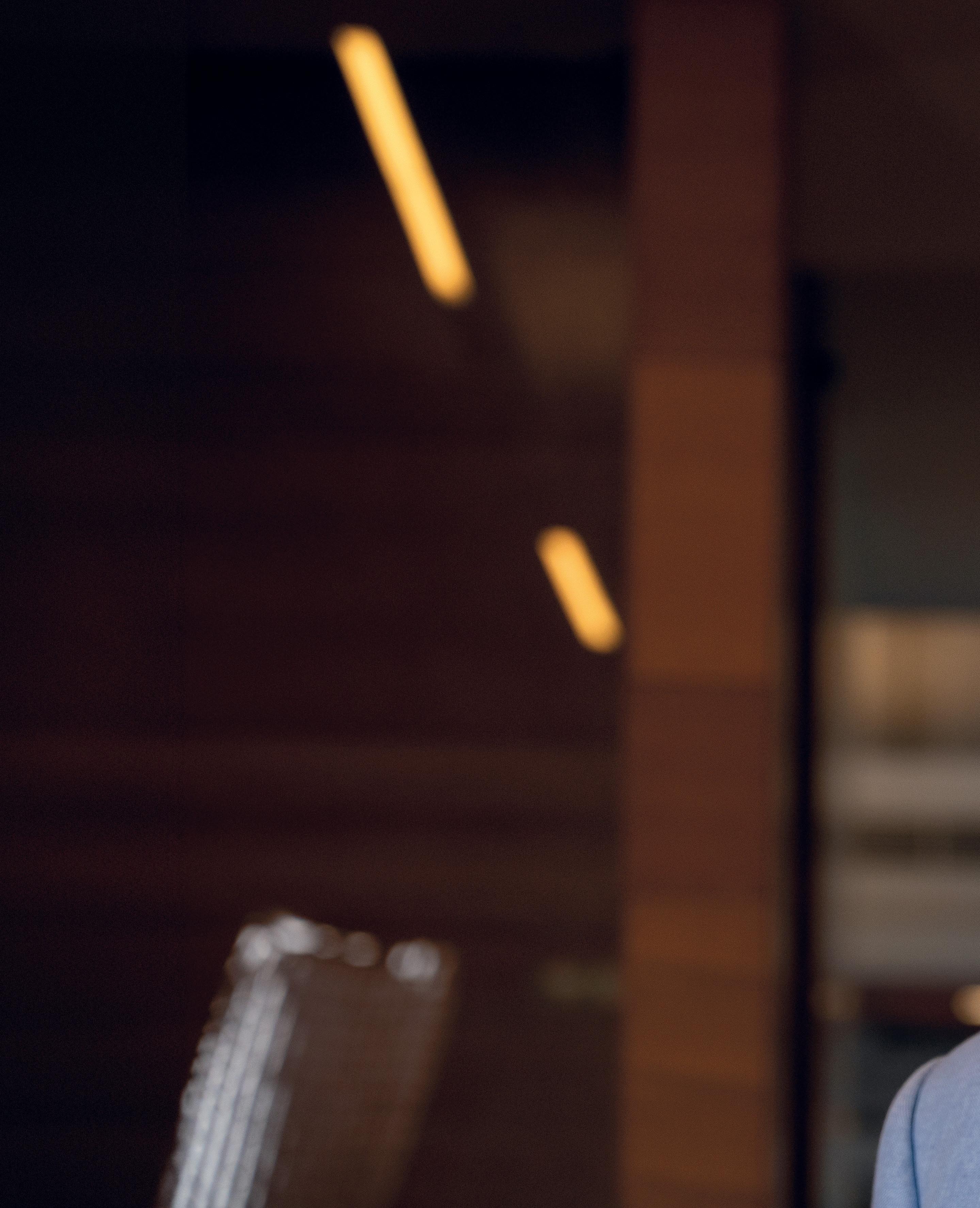
“Architecture is a humanity, not a science”
The opportunities and project openings that characterise Brian Johnson's career have led to an extraordinary raft of client assignments, while his company, Godwin Austen Johnson has a peerless reputation across key sectors, particularly education and hospitality
May 2024
12 | Close-up


May 2024 Close-up | 13
“In many ways, I’m the epitome of someone who believed that he would only come to the UAE for a couple of years - but somehow, time and opportunity always kept me here. I’d been working as an architect in London and my wife and I thought we’d come to the UAE for two years and see how things went.
“Little did I know what was in store! No sooner had I started working here than my employer suddenly disappeared after just three months! But it was still a great opportunity, because then I contacted my previous company in London and asked them if they would be interested in opening up here. The long and the short of it is that I ended up being the managing partner of an architectural firm at age 26! Here I am now at 74, still here in the UAE.
“As a company, we certainly had some very good, unexpected opportunities; for example, winning the international competition to design Dubai Creek Golf Club. The other entries were all trying
to make you think of a golf club rather than make you think of Dubai. But with a previous practice, I had already worked on the design of the Emirates Golf Club, and learnt a lot of lessons about combining functionality with the aesthetics of what is essentially a desert building, and one that needed to encapsulate a regional identity. I was also lucky in the sense that back then, not too many people had been experimenting with forms of local architecture, and we could pioneer many of the approaches that would later on be taken for granted.
“There is another theme, too, in what we do. One of the things that always interests me is the way that people use buildings - perhaps in ways that we might not always expect. At Godwin Austen Johnson, we always try to give people the scope to be creative - rather than trying to be creative on their behalf and telling them how to use the space. In this sense, architecture is a humanity rather than a science. Whether we create a school, a golf club, a hotel or an art gallery, it’s all about the people.
“How does this relate to the Dubai Creek Golf Club? Well, by the time we worked on that project, we knew how to solve some of the key issues that golfers confront day after day. We could really design it around them and their needs whilst also creating an essentially contextbound, local but modern style of building.
“Over the years I have been very fortunate to have worked with both HH Sheikh Mohammed bin Rashid al Maktoum, now the Ruler of Dubai and HH Sheikh Sultan bin Mohammed al Qassimi, Ruler of Sharjah on their various projects.
“Many years ago I designed a large palace for Sheikh Mohammed in Al Ain which involved us all flying down to the site in His helicopter (HH flew it back to Dubai Himself) and we have been involved
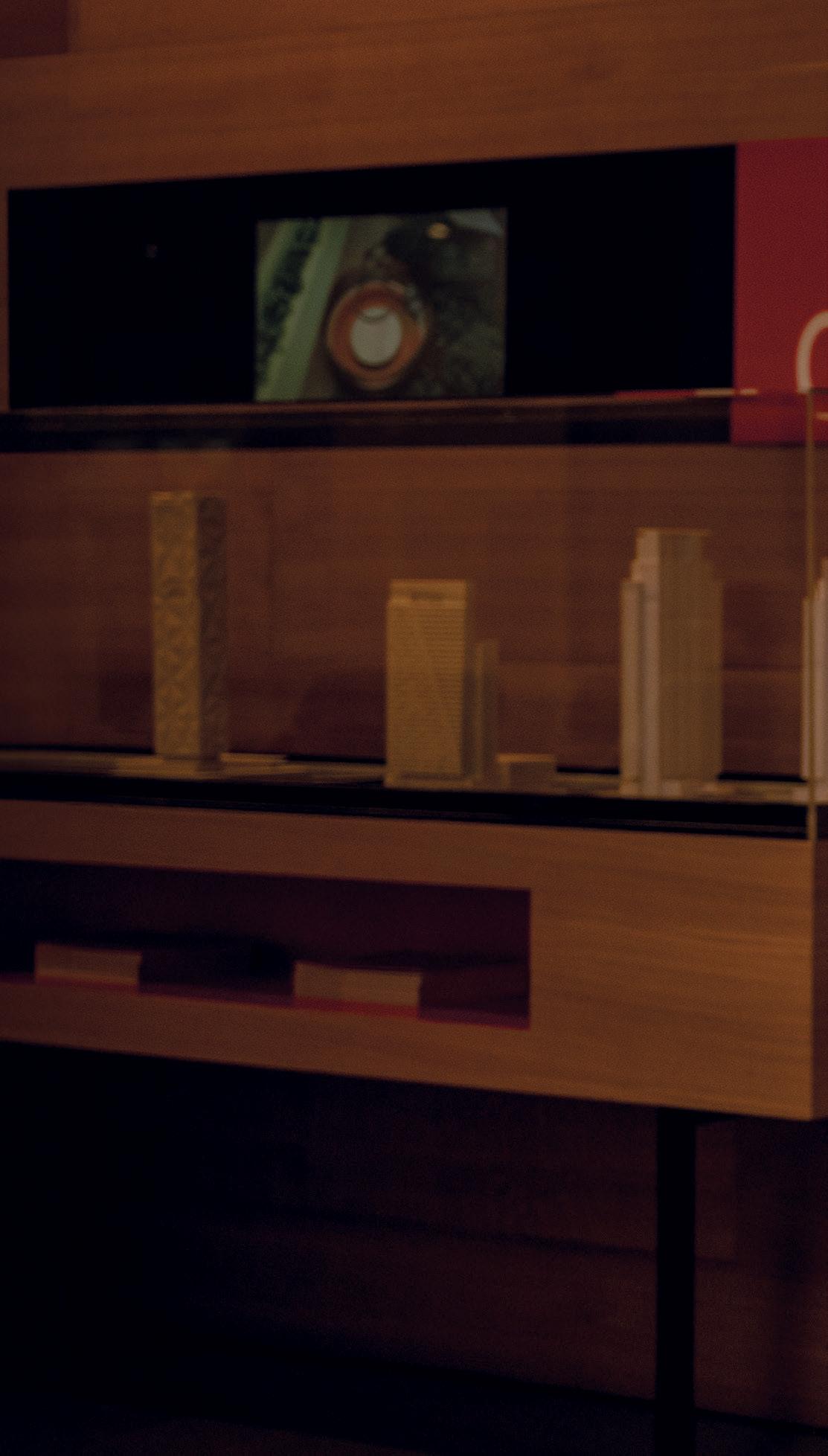
in a number of cultural projects for HH Sheikh Sultan bin Mohammed al Qassimi including the Aga Khan nominated Sharjah Art Foundation which has proved to be a unique example of the integration of a modern art gallery within the footprint of an existing urban fabric, blending state of the art facilities with traditional materials whilst maintaining the sense of scale of the old streets of Sharjah.
“Given that there is sometimes a thematic continuity between a number of our key projects, I am often asked whether Godwin Austen Johnson has a characteristic house style. The answer
May 2024 meconstructionnews.com
14 | Close-up
Brian Johnson, Principal and Managing Partner, Godwin Austen Johnson.


I firmly believe that, as architects, our goal is to respond to people’s hopes, dreams and aspirations; our clients’ wishes and the habits of the end-user should always take priority”
is no; we’ve never been a practice that wanted to have a defined “style”.
“We work on the principle that all our projects are bespoke and context-bound; we design across a very wide portfolio and it would be wrong to try to link them in any external, stylistic way. When I see practices who do have a house style, I feel that there is always an element of them trying to force things to fit that style, and we’ve never wanted to do that.
“I think the same thing applies to our approach to identifying a uniform company ‘culture’. When I started the practice, it never occurred to me to put a
set of mission statements up on the wall.
“Our aim has always been to look outwards at the world and design buildings which reflect our clients’ needs, and to avoid being too inwards-looking, trying to create uniform values or attitudes. I firmly believe that, as architects, our goal is to respond to people’s hopes, dreams and aspirations; our clients’ wishes and the habits of the end-user should always take priority.
“In terms of building the business, I never had any landmarks in mind, such as reaching a certain number of employees. I wanted our choice of colleagues to reflect the things that an architectural firm needs to do best; it’s about engaging enthusiastic and talented people with those core skills, and even in this era of AI and advanced architectural technology we still have people who are artists who produce beautiful hand-drawn sketches which show the client that we understand what the brief is and how appealing we will make it look.
“All in all, I think the future is very exciting. I feel that the introduction of Jason Burnside as Managing Director has brought a shot of new inspiration to the business, and it’s really brought the team together. I think that now, the sky is the limit - we have a lot of repeat clients and we know what we do well. We’ll keep on putting quality, people and context first; even now, I still can’t wait to see what happens next…
“This building was created in a traditional style, because this was what His Highness wanted. He then saw us as being amenable to the idea of blending traditional architecture with a wide variety of functions, and creating projects that could fit right into the old area at the heart of Sharjah.
“We’ve become acutely aware of this need to create a local ‘feel’. So, for example, when we worked on the One&Only Royal Mirage, we made sure that when you visited the hotel, you were very much aware that you’d been in a ‘Middle Eastern’ environment.”
May 2024 meconstructionnews.com Close-up | 15
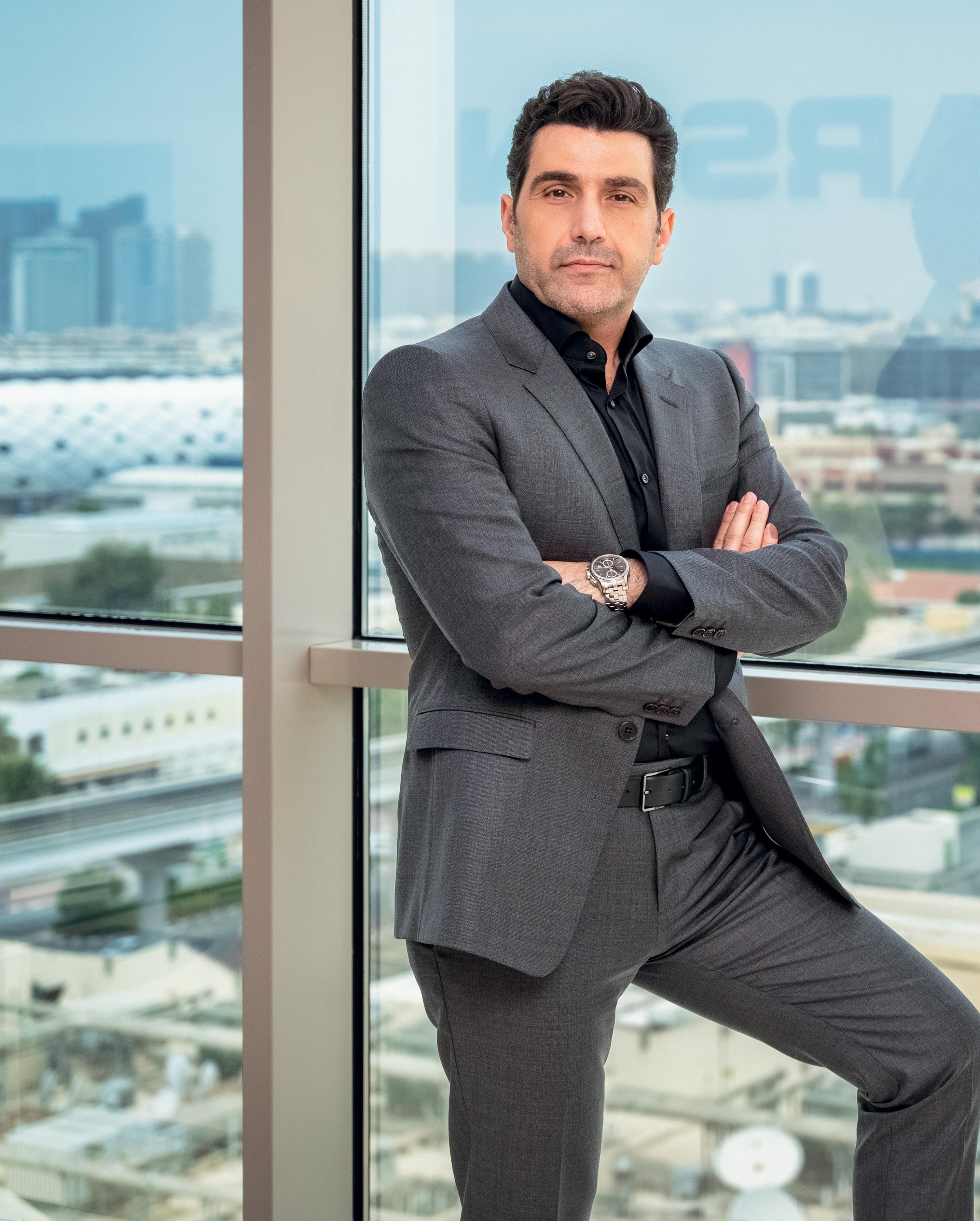
May 2024 16 | In Practice


THE NEW REALITIES OF URBAN PLANNING
At a time when we hear more and more about the move away from traditional models of urban planning and the shift towards communityfocused, regional hubs, what are the realities of these new paradigms? What are the constraints and the opportunities? Middle East Consultant spoke to Faysal Ali, Vice PresidentDesign and Planning Studio, Parsons, whose studio focuses on crucial areas such as Master Planning; Landscape Architecture; and Sustainability & Environment. Parsons itself, of course, has been designing and delivering infrastructure in EMEA for more than 65 years - and the following interview tells us a good deal about the new urban futures we are destined to be a part of…
May 2024 In Practice | 17
aysal, we are hearing more and more about the trend towards a ’15-minute’ hub model for urban planning; is this actually realistic and are we seeing any examples of it being created in tomorrow’s generation of cities?
“It’s important to remember that the ‘15-minute city’ concept itself is not new: this is how cities were traditionally built. In our day-and-age the concept tends to be based on several guiding principles, including:
• Connectivity
• Increasing density and compactness (to avoid urban sprawl)
• Smart mobility
• Sustainability
“So, to put it simply, the 15-minute city concept revolves around creating communities in which work, education, shopping, healthcare, etc. is accessible within a 15-minute walk - or bike ride - from home. It’s a model that puts people at the centre of the planning and development process.
“This is rather different from the more traditional approaches, for example zoning, which grew in popularity with the rise in industrialisation over the last century, and which the current trend is moving away from.
“Personally, I believe the 15-minute city concept is a realistic one and while it is a global concept, it needs to be adapted to each community and country - it is not a, ‘one size fits all’ approach to designing and planning new communities. We need to take history, culture, demographics, economics and the climate into consideration when designing a community in this way.
“There is another factor here too; the future of any city should be underpinned by a robust data infrastructure. As access to data grows as a fundamental expectation of cities and citizens, we must evolve

to enable an environment where data is obtained, owned, structured, governed, and accessed in ways that improve mobility, sustainability, and resiliency.
“At Parsons, we are leaders in the digital enablement of traditional infrastructure. We find ways to apply technology that unlocks the potential of infrastructure. This digital enablement goes hand-in-hand with the future of data. As infrastructure is digitised, traffic managers, city designers and public safety officials are able to use that data to make more informed decisions that impact the safety, efficiency, resiliency, and livability of their cities.
“The Parsons’ Design and Planning Studio specialises in community development. We deliver unparalleled master planning and public realm projects. We have a unique setting in which urban planners and designers, landscape architects, and sustainability specialists work side-by-side developing master plans that are based on public realm frameworks instead of vehicular infrastructure. The user experience is always prioritised and we make sure community facilities and social amenities are accessible to all. A good example of this is the King Salman Park project we are working on in Saudi Arabia. We are developing one of the world's most transformative urban regeneration projects on an old airfield located in the center of Riyadh city. Residential, commercial and cultural developments will surround the new park and the city's new metro line will accommodate this new development.”
Tell us more about the current move towards mixed-use developments; does this reflect the preference for having all lifestyle items conveniently located, or rather, the commercial opportunities it brings for developers?
“Both. Communities with a balanced mix of residential, commercial, hospitality
May 2024 meconstructionnews.com
18 | In Practice
King Salman Park is a major and transformative exercise in site regeneration and repurposing.
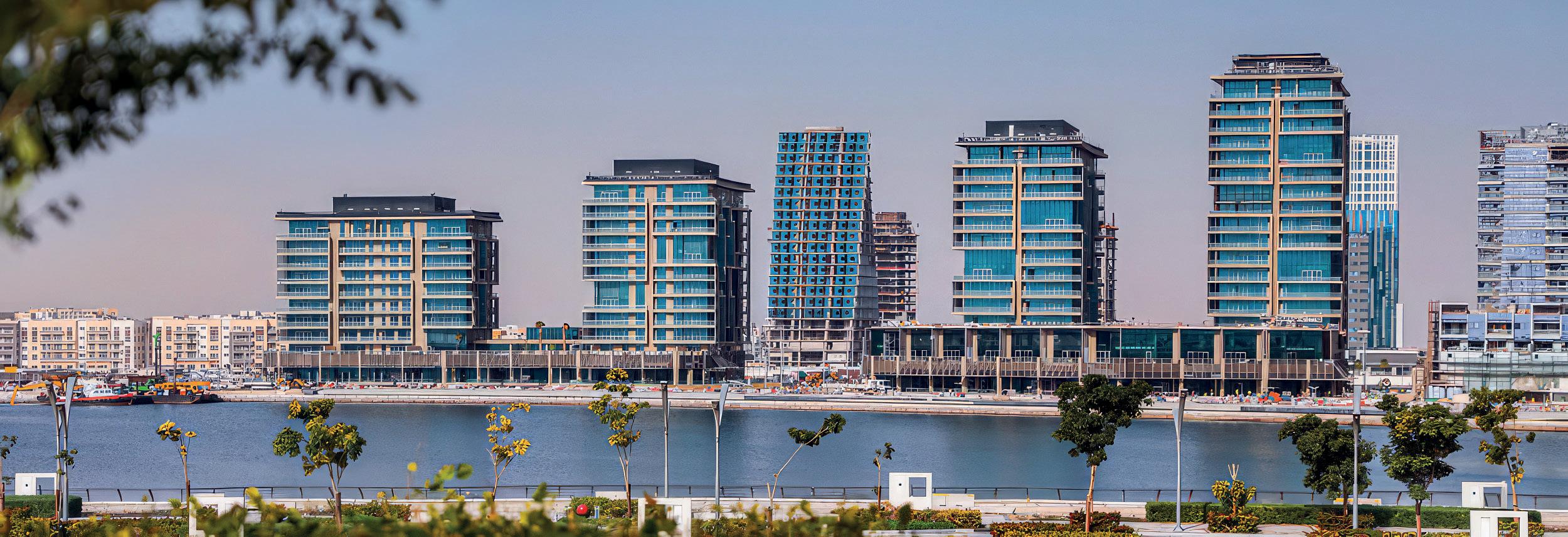
shortlist for the BIM Project of the Year.
and entertainment elements are more sustainable and offer a better quality of life. This can be seen when comparing dense mixed-use city centres with suburban single-use communities.
“Mixed-use communities are vibrant and offer places to live, work, and play within a small radius, creating a sense of place and promoting healthier lifestyles. Of course, developers and investors can save on infrastructure costs by optimising capex and opex throughout the project life cycle, and saving land for alternative uses, such as recreational open spaces.
“For us, the concept of ‘placemaking’ is key. We focus on creating spaces, such as plazas, promenades, and parks, that promote social interactions. This means community facilities are strategically located and connected through active public realm networks that attract a diverse range of tenants and visitors.
“Haven by Aldar, a recent launch, serves as an excellent example. It marks Aldar’s inaugural development in Dubai and stands as the city’s first residential wellness project. This integrated community has been designed with sustainability and wellness principles at its core. Notably, our work on this project has earned a spot on the Construction Technology Awards
“We develop mixed use communities with a commercial core supported by residential density and community facilities and complemented with diverse hospitality and recreational offerings. Parsons works with several government clients and real estate developers on mixed use developments in the region, such as The Seef, a residential development project in Qatar's Lusail city. The project recently won awards for Residential Project of the Year from MEED as well as Construction Middle East. Dubbed, ‘Lusail's Seaside Sanctuary’ all towers that make up the development consist of premium retail, social areas, and amenities including gyms, steam rooms, squash courts, kids play areas and snack bars. The project was also awarded with a 3- and 4-star Design & Build Global Sustainability Assessment System (GSAS) certification.”
Do you feel that tomorrow’s cities will place more emphasis on efficient and affordable public transport, as opposed to bisecting communities with large super-highways and continuing the dependence on a car-based society?
“We need both macro and micro-mobility solutions; the two are not mutually exclusive. With the rise in the rate of urbanisation, we have witnessed a rise in demand for designs and plans that incorporate the movement of people and not just cars.
“In our master planning and public realm
designs, we emphasise the journey and the user experience. We design public realm networks, including parks, cycling tracks, and micro-mobility hubs, that encourage walkability and provide accessibility and connectivity to all user groups.
“It’s worth noting that public transportation systems are more affordable and sustainable and can serve more users with less land and a much smaller carbon footprint. The RTA’s Dubai Metro, one of our flagship public transport projects in the UAE, is a good example of this. The Metro entered passenger service in 2009 and underwent its first major rail expansion in preparation for Expo 2020 during which the Red Line was extended by 15km to the Expo site. One of the main objectives was to provide a single-seat journey for passengers arriving at Dubai International Airport to the Expo 2020 site. The new route now serves several existing mixed-use highdensity corridors in Dubai South, in addition to newly planned transit-oriented developments.
“But let’s not forget that highways can also play a key role in the movement of people and goods and thereby benefit the economy. However, they should not bisect residential communities. Instead, they should be built outside urban areas with the smallest footprint possible and used to connect hubs.
“Here at Parsons, we develop intelligent transportation systems and support local authorities in optimising traffic flows, which have commercial, sustainable, and environmental benefits. These include
May 2024 meconstructionnews.com In Practice | 19
The Seef is a noteworthy example of a highly contemporary mixeduse development, creating a vibrant and engaging community hub.
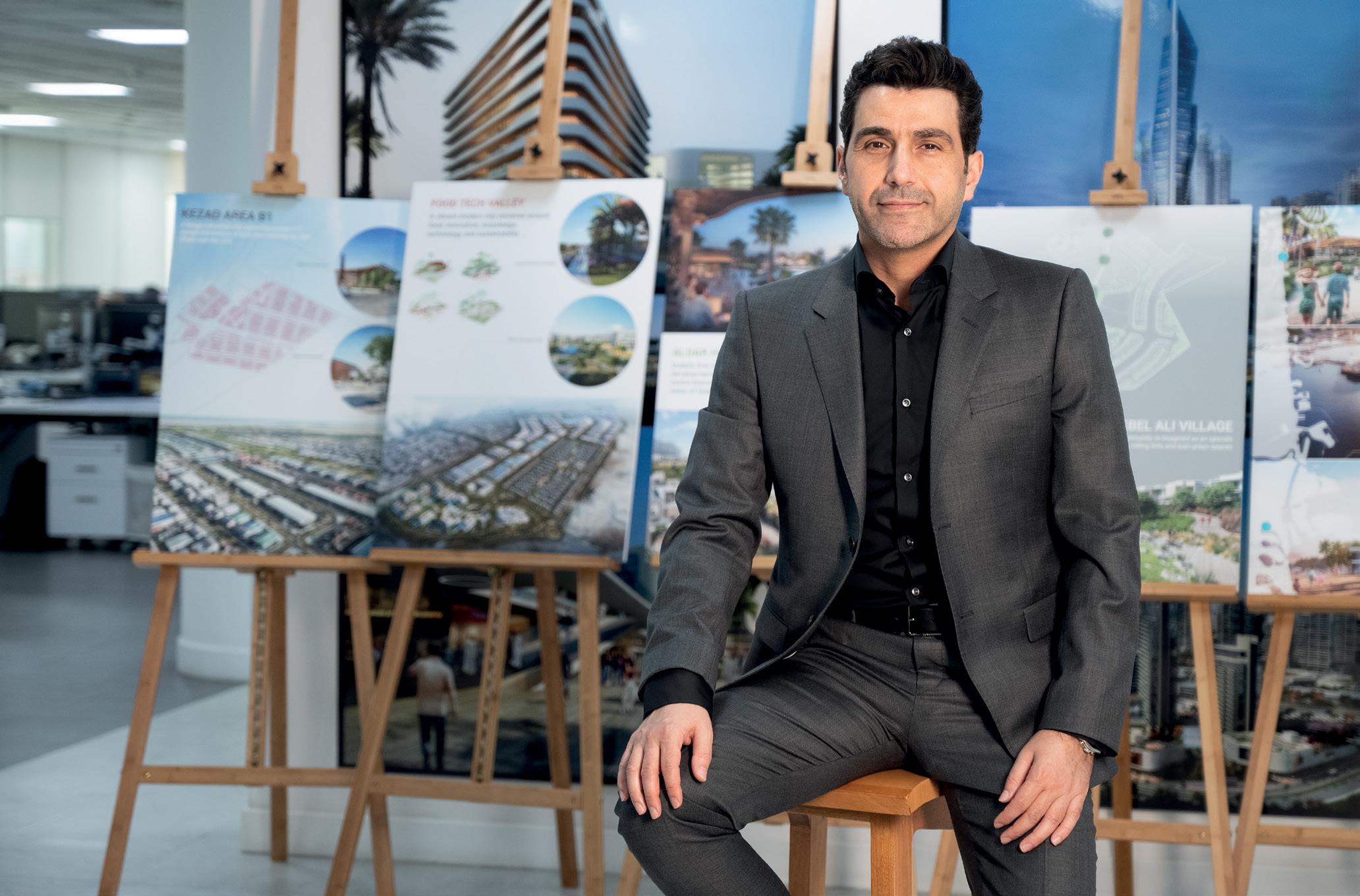
innovative projects. This dynamic interplay creates fertile ground for the development of integrated solutions that help our customers reimagine the future.
aligning infrastructure systems, reducing carbon emissions by ensuring vehicles spend less time on the road, and enhancing the overall driver experience.”
What do you see as some of the key innovations currently taking place in the market? Are these coming from client requests or from innovations that architects and designers are bringing to the drawing board?
“Designers are inherently creative, and our clients, especially in EMEA, are driven by National Visions, economic pledges, and regulations to differentiate their offerings, which has led to some exceptionally
“Innovation plays a role at every stage of the project life cycle, from research through to design and engineering, and ultimately, the physical development and construction of the built environment.
“I should also mention that Artificial Intelligence (AI) and Machine Learning (ML) have a role to play in the way we think about and deliver projects - and they certainly influence the way we plan and build smart cities. AI and ML technologies include parametric and computational design, digital twins, Virtual Reality (VR) and Augmented Reality (AR) to name a few.
“In turn, urban analytics and big data help us understand city dynamics such as patterns in residents’ behaviour, which enables us to offer future-proof solutions.
Artificial Intelligence, Machine Learning, and Big Data have a major role to play in the way we think about and build cities of the future ... The integration of digital technologies with urban systems allows our cities to function more efficiently and sustainably’’
May 2024 meconstructionnews.com 20 | In Practice
Faysal believes in a studio-led approach, which combines both strong traditional skillsets and future-proof solutions using AI and advanced robotics.
Robotics, automation, drone technologies and advanced material sciences also help us optimise resources, deliver projects faster and reduce our carbon footprint.
“Here, for example, our planners, architects and engineers already use advanced urban analytics and design techniques, and our construction and asset managers deploy and operate complex technologies in delivering major urban systems. The integration of digital technologies with urban systems allows our cities to function more efficiently and sustainably. This includes advancements in smart mobility, public safety and security, smart energy, e-governance, green urban planning and buildings, advanced waste management and water management.
“What’s more, by building intelligence into our infrastructure, we are able to operate and maintain built infrastructure more efficiently by employing predictive maintenance and avoiding reactive
responses to failure. This approach not only contributes to quality of service but also yields cost saving benefits.
“There is also a link here between technology and modern mixed-use developments, which it underpins and differentiates. At one of our giga projects in Saudi Arabia, for example, we are developing a digital ecosystem and environment which will enable the frictionless sharing of data across multiple sectors, authorities and citizens. A robust and forward-thinking governance framework is being developed which will establish the foundations for data sharing across all aspects of the city. The framework shall complement the future vision, where the city will be underpinned by a distributed and shared data architecture.”
What do you see as the latest trends in the use of materials? Post-Covid, we saw a growing preference for easilysanitized materials (e.g. metals instead of wood) - is that trend continuing?
“The Covid pandemic opened our eyes to new dynamics in urban life and mainly to the relationship between public health
and the built environment. For example, social distancing and sanitisation in open spaces and on public transport were key in reducing the spread of the virus. This influenced the way we design public spaces and the materials we use in it.
“Materials that people interact with directly (e.g. street furniture, playgrounds and sports equipment) need to be easy to maintain and sanitise. Common materials meeting these requirements include metals, plastics, concrete, and cast stone - and there’s no doubt that post-Covid, there’s heightened awareness and demand for such materials.
“Wood is another material that meets this requirement; however, its use should always be considered and balanced with function and aesthetics against sustainability and longevity.
“Ultimately, the choice of material is influenced by hygiene, sustainability, innovation, performance, and regulation. The Design and Planning Studio at Parsons is always on the lookout for innovative, sustainable materials that meet our clients’ overall development objectives, performance, and regulatory requirements.”

May 2024 meconstructionnews.com In Practice | 21
Haven by Aldar has been designed with sustainability and wellness principles at its core.
“Our
main strength is the client relationship”
What are the ‘touchstone’ qualities that have empowered TBH to build a notable presence in the dispute resolution marketplace? How is that sector evolving and in what ways will TBH seek to create a more proactive, transparent approach to dispute management? Middle East Consultant spoke to George Matta, Director & Partner, TBH, and Dina Dweik, Senior Associate, TBH, about the industry’s opportunities and new horizons…
s a background”, says George, “when people ask us about the company’s growing profile in dispute resolution, I explain that this has resulted from the fact that we are, at our core, a team of experts - one that has always come together to help our clients in whatever ways are best and necessary. We don’t just have expertise in the actual project execution. We benefit from a wide range of front and back-end skills - whether that may be planners, quantity surveyors, and so on - and it’s this broad mix of experience that means we can understand each and every factor in a project, and therefore be well-placed to lead a very detailed dispute resolution.”
“A great example of this”, explains Dina, “is that sometimes, we are working on a client project and then go on to help that same client with dispute resolution. For example, I’m currently working on a dispute resolution for a particular client, while my colleagues have been working on the same client’s project planning and execution over the last two years! So, this means there is an organic continuity; we know all the details about how the project unfolded and know exactly where any challenges have arisen.”
George continues: “That hands-on skillset is vital in terms of maintaining credibility. For instance, in court-room situations, there have been a few occasions when the judge has asked me: “Mr. Matta, when was the last time you actually managed a project?” You absolutely must have all the practical working experience, because otherwise your advice will be seen as purely theoretical.
“Our background over the years has been all about having the in-depth experience of every aspect of project work, and therefore being able to plan
contingencies for whenever problems arose. TBH started 59 years ago - at that time there was no programming software, and everything was done by hand, including the critical path analysis, in a completely analogue world. We rapidly learned that with any client project, the unexpected can always occur, and we evolved the most effective, proactive approaches to solve these problems.”
BUILDING THE SKILL-SETS OF THE FUTURE
If ever there was a primary ‘people skill’, it’s dispute resolution. So, what is TBH doing about hiring and training a new generation of professionals in order to build further market presence?
“In terms of our approach”, says George, “we have two streams. Of course, sometimes, like everyone else, we have to do lateral hires, but it’s not easy, because our expertise is quite unique. The way we are dealing with this is through hiring young graduates and then training them on the necessary key skills. Make no mistake: these young recruits are very
May 2024
22 | In Practice
meconstructionnews.com
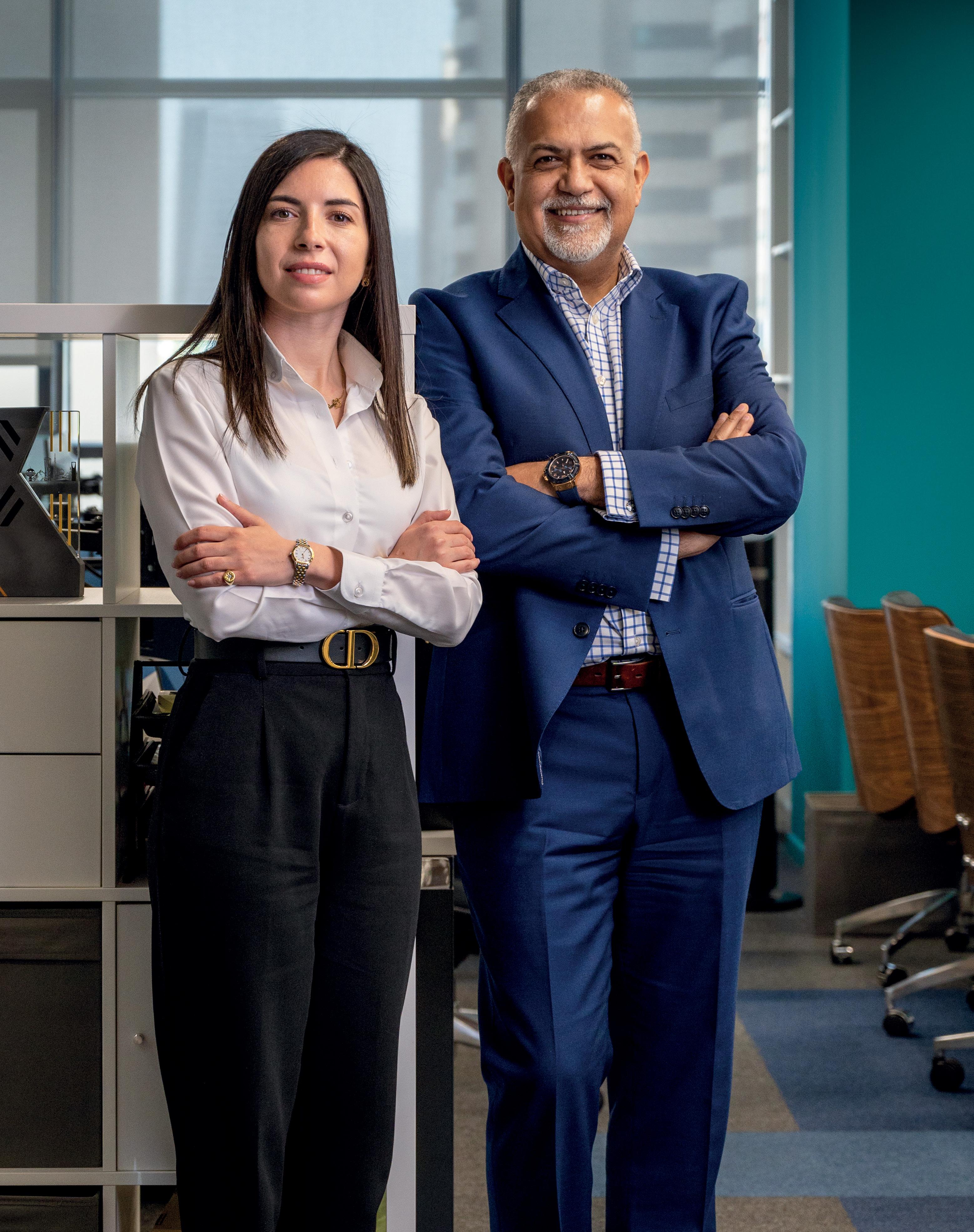
May 2024 In Practice | 23
clever and they’re keen to learn. In fact, sometimes they can do a lot of things better than the veterans like me!”
Dina adds: “When I first came to the TBH offices, I wondered why the company hired graduates without consultancy experience (or for that matter, any other kind of work experience!). But then, a manager said to me: “Dina, they are here because these people are our assets. They will learn a lot - and in a short time, they’ll become the key assets of our business’.
“I’m always surprised at how, generally, these younger team members can find better solutions: they are very smart and, of course, have strong IT skills and fluency with the key software packages. This means, as soon as they start, they can really expedite all the back-up, scheduling and analysis of project work.”
THE ROLE OF MENTORING
“I should add”, says George, “that while each level has its own contribution, we are a very open and flexible business, and there is a fluid pathway upwards through the company. A good example of this is how we utilise mentorship; we have really developed the role of mentoring as a part of company policy.”
Dina comments that: “When I joined TBH, I noticed that everyone had a mentor, and this wasn’t just for the technical parts of the job, but also for personal and career development, and the vital soft skills like cultural intelligence, and so on. The management encourages everyone not just to have a mentor, but to become a mentor. I personally have now started mentoring one of my graduate colleagues - and the experience I’m gaining as I mentor her is huge. I’m always strategising and thinking about how I can best guide her.
“During the mentoring process, we also place a lot of emphasis on aspects like career growth, not just the technical things, important though they are. I’d like

to mention as well that while you are given a mentor when you join TBH, there is a review every six months, which gives you the opportunity to change your mentor if it seems that you’re not reaching your goals, or you’ve ‘topped-out’ with everything they have to offer you. If you have reached a ‘ceiling’ with your mentor, you can change.
We rapidly learned that with any client project, the unexpected can always occur, and we evolved the most effective, proactive approaches to solve these problems”
“I think that mentoring here at TBH makes it easier for people to develop their careers, get promoted and work towards achieving their goals. I’m actually an example myself: I joined TBH 18 months ago, and have already been promoted to Senior Associate. I could not have done this without the regular reviews and ongoing discussions about how things are progressing.”
“What’s also important”, continues George, “is that you can have more than one mentor. Perhaps one will advise on the technical side, the other on your development path, soft skills, and so on.
“Throughout this process, there is a very soft link with HR, monitoring how things are progressing, but this is very much a co-ordinating and administrative role. It’s tabulation about what is going on, rather than physical input into the dynamics of the relationship. We try to strike a balance between preserving the chemistry and confidentiality of the
meconstructionnews.com May 2024
24 | In Practice
George Matta, Director & Partner, TBH.
mentoring process while also ensuring that it links back formally into the career track and upward growth.”
NEW DYNAMICS IN THE MARKET
What about the way the market is currently evolving? Do we see more opportunity for expert dispute resolution?
George believes there is one very important sea-change in attitudes: “In the past, a contractor wouldn’t feel comfortable bringing a case against government, or a sub-contractor or smaller business wouldn’t feel confident to bring a case against a major contractor or developer. But now, the new generation of arbitration centres deal with things in a very open, transparent and clear way
The management encourages everyone not just to have a mentor, but to become a mentor”
- they’re very approachable - and the expert forums they provide are definitely breaking down this resistance.”
“I can see”, says Dina, “that with our clients, they are more and more aware of how disputes management works, and the first thing they try to do is to stop disputes happening at the first place. People are becoming much more

proactive, and if there are claims, there is a lot of emphasis on ensuring they are properly managed. In my view, there is also a lot more willingness now to pursue dispute resolution at an earlier stage of the project.”
“I would say”, George comments, “that there is more maturity now with many clients. Increasingly, clients ask us to fairly assist all the parties involved. They recognise that the project needs to move towards completion, and the last thing everyone needs is to get locked down in format disputes. Inevitably, there would be more arbitration in 2-3 years. All in all, I think the future of dispute resolution is evolving; here at TBH, we want to encourage a tendency to have better discussion between parties before any difficulties arise.”
TBH AND THE FUTURE: PUTTING QUALITY FIRST
“I often speak to friends and clients in the industry”, says Dina, and they say: “TBH, you are everywhere!” This is because we really believe in spreading the word about effective dispute resolution, and one way to do this is to take part in important industry events and occasions - as well as belonging to the accredited associations, in which we always try to play an active role.”
“Our main strength”, George concludes, “is our long-term relationship with clients. Remember that as a company, we are a team of private partners - we’re stakeholders in what we do - and when we plan our commercials and targets, those figures are based on our in-depth knowledge of the client relationship. So, the quality of that relationship is everything. We’re always, first and foremost, about providing quality; that’s why we want to offer clients the best in dispute resolution - and why we’re so fully committed to it.”
Dina Dweik, Senior Associate, TBH.
meconstructionnews.com May 2024
In Practice | 25

RISK H TSP TS IN
meconstructionnews.com May 2024 26 | In Practice

GIGA-PR JECTS

At a time when we hear more and more about the various Saudi Arabian ‘giga-projects’, it’s well worth keeping in mind that they escalate not only the logistics of urban design, procurement and project management, but algorithmically increase the likelihood of critical risk. Here, world-leading risk management author Joseph Brewer - author of ‘When Mega goes GIGA’ - identifies a raft of these contingent risks, and what to do about them…
May 2024 meconstructionnews.com
In Practice | 27

here’s no getting round it: very large and complex projects are fragile for many reasons and they tend to be overly-sensitive to many issues that smaller projects tend not to face (and even if they do, with a smaller scale, they’re more easily resolved). So, it makes sense that execution plans must not only focus on doing the right things, but they also have to address the key vulnerabilities these giga-type projects face.
Let me say this very clearly: about 60% of large complex projects actually fail.
The reality is that the history of large complex projects is strewn with significant cost overruns and schedule delays. Using basic cost and schedule criteria, benchmark data indicate that, nominally, two-thirds of such projects significantly fail. In short, they fail at a much higher rate than normal-sized large projects. Of course, for those who wish to undertake such behemoth efforts, these realities are discomforting. The obvious resort will be to visit the host of published best practices and guidelines that attempt to identify the most effective methods to address these heavyweight challenges. Yet often, these won’t tackle the challenges in enough detail, nor effectively categorise the solutions.
So - let’s invert the problem and describe a cluster of risks that help organisations guard against what NOT to do. The following are core ‘hotspots’ contingent on the new raft of giga-projects. You may well recognise them without having realised that they are in fact endemic scenarios which organisations large and small are confronting every hour, every day.
FAILURE TO DO THE BASICS WELL
In the last 30 years the industry has attempted numerous times to define the best practices associated with developing and executing large projects. These industry best practices are not hard to find and are readily available to any organisation with the resources to train its employees. History has demonstrated, however, that establishing these best practices so they become integral to the project organisation’s culture and daily behaviour is both time consuming and difficult. As a result, projects are still routinely developed and executed without teams deploying all of these best practices. Ensuring that all project team members are well versed in these best practices and synchronised on terminology and methodology is paramount when executing a large complex project.
UNSTABLE OBJECTIVES
All projects start with an intended objective, sometimes referred to as its mission or desired outcome. All projects suffer negative impacts if this objective is not fixed and stable throughout the project. The end-point that defines success for a project must remain the same throughout its journey. If not, it will suffer rework, delays, added costs, and schedule extensions. When these occur to a very large and complex project, the negative impacts are equally large and complex.

UNQUALIFIED TEAM MEMBERS
Large complex projects often have very large budgets and can experience cash flows greater than $300million per month”
The engineering and construction industry identifies and executes projects. The industry is volatile. Peak to valley workload levels can easily range from five to one. While many reasons exist for this, the resulting impact on the personnel who staff this industry is immutable. The company may be growing and hiring, often acquiring inexperienced personnel, or the current staff is moving on due to insufficient future work, perhaps seeking work in other industries. Another concurrent reality of the engineering and construction industry is that the large majority of people who have relevant experience with projects are already working on a project. Thus, when the time comes to staff-up that next project, organisations begin to ask the inevitable question, “Who is available?” Answering that question often doesn’t place the most qualified personnel in commensurate roles on the new project. The result is often inexperienced, or insufficiently
May 2024 meconstructionnews.com
28 | In Practice


experienced, personnel assigned to key roles - particularly on large projects where there are more roles to fill. These two concurrent realities alone perhaps explain why the industry struggles with consistently deploying its best practices.
UNPROVEN TECHNOLOGY
Credible benchmark data show projects attempting to deploy a new primary technology face higher levels of challenges and thus perform less well than projects deploying mature and proven technologies. Deploying new technologies is a welcomed initiative. It’s one reason why the engineering and construction industry can become more productive and produce better and higher-quality products. Some best practices specifically relate to the unique challenges of executing new technology. Deploying new technologies within the scope of a very large and complex project, however, simply increases the risks that unexpected discoveries will occur and will
create late changes. Large complex projects are best suited for mature technological scopes. If new technology elements are inevitable, then learning and deploying the best practices for managing this discoveryprone scope is very worthwhile.
INCOMPLETE FRONT-END LOADING
“Fix the scope before starting the project.” This old adage has matured significantly in construction. Today, the contents and level of detail in front-end engineering design (FEED) packages are precise. These FEED activities, sometimes referred to as frontend loading, are critical to the success of projects. Complete, robust execution of these activities is a prerequisite to project success. Funding, however, is required to perform this early work. Large complex projects require large amounts of early funding for robust FEED. An unfortunate propensity, regardless of the owner or type of project, is to underfund this early work when the project scale is very large.
Obtaining large amounts of funds for a big project not sufficiently defined to obtain quality estimates or bids is understandably difficult. If sufficient funds are not obtained, however, and the resulting FEED is not performed well on a large complex project, the consequences will be dire.
CONSTRAINED FUNDING
This will in all likelihood sound very familiar. Large complex projects often have very large budgets and can experience cash flows greater than $300million per month. These size numbers make everyone nervous. Often this manifests in attempts to constrain the spending to reasonable levels. In short, you can’t put gorillas on diets. Attempts to constrain funding often start ahead of full authorization (the typical full funding point) during the formative period for the project. Nothing can be more damaging than to prevent a very large project from doing the work that it needs to do. Yet those who attempt to limit the funding often feel they have a duty to keep project leaders from spending funds too freely. Nothing could be further from the truth. If the nominal project capital cost is, say, $10billion, then it may well take $750million to complete FEED and obtain a quality cost estimate to take to the funding committees. And yes, someone has to put up that initial $75omillion before full funding can be achieved. Not a comfortable journey for the faint-of-heart.
LATE CHANGES
Changes in project objectives and technologies can have negative impacts on cost and schedule, especially changes that occur after full sanction. Large complex projects always take longer than typical large projects. This lengthened schedule gives greater opportunity for change to creep into the picture. Change forces can come from changes in management, market conditions, the local community, environmental regulations, labor supply, and numerous other areas. Due to their greater scope and longer schedules, large complex projects attract greater than average change forces.
meconstructionnews.com May 2024
In Practice | 29
Early stakeholder alignment and planning – in order to combat these forces - are all there is to minimise this reality.
A PROJECT AHEAD OF THE DEAL?
Multiple entities often sponsor large complex projects. These can be joint venture partners, multiple municipalities, and/or government entities. The result is that none of these organisations is on their own turf, using their typical processes for project development. Therefore, they are typically working for the first time with a project’s specific set of stakeholders and using unfamiliar processes to build alignment on what they want to achieve and how they want to achieve it. Often these stakeholders, however, are aware that a large project’s schedule for development
and execution will take many years. This realisation then builds consensus that the project effort should begin, even though the details of what is to be built may still be ambiguous. Starting a large complex project under these circumstances is very risky.
EXPECTING PRECISION
PREDICTABILITY: COST AND SCHEDULE
Large projects are notoriously unpredictable by most people’s gut-check standards. If +/three sigma defines a normally distributed system and with one sigma equal to nine percent as the cost variation versus an authorisation estimate, then +/- 27 percent defines the “normal” cost variation in this system. Consider that a one sigma of nine percent represents some of the best project
systems in the world. Schedule variability is equally large. Bring to this environment executive leaders or public servants, all with an expectation that annual budgets will stay within a range of a few percent, and the components for significant nonalignment and conflict potential begin to appear. Careers have ended due to this disconnect of understanding.
IGNORING KNOWN RISKS
“Let’s focus on what we can control!” Not bad advice in the right setting. This thinking, however, can cause sponsors as well as project leaders to dismiss risks they recognise as completely out of their control and influence. Because this mantra is so prevalent within operating organisations, it can leak into the culture of a project

meconstructionnews .com May 2024
30 | In Practice

leadership team and cause it inadvertently to fail to place these type risks within the contingency and schedule analysis efforts, or within the risk management structure, or to underestimate their potential impacts. Just because one cannot influence a risk does not mean simply to ignore its power to create a negative result. Closely monitor its developments.
CONSTRAINED RESOURCES
Constraining the funds needed to develop and execute a large complex project can be devastating. Other types of constrained resources can have an equally harmful effect. The most prominent is a constraint on personnel: the type of personnel who have the experience to staff and lead the project teams supporting a major complex programme. Large complex projects need plenty of human resources in all the roles, both for the owner’s team(s) as well as the contractor teams. Naïve views persist that large scale projects can benefit from “economies of scale’” and thus require less people per unit of work. In fact, the reverse is true. Large complex projects come with unique challenges that require human resources dedicated to managing them.
PRIORITISATION
Prioritisation and Pareto charts are the daily bread of operating organisations. They are at liberty to decide the most important work for today and what is to be done tomorrow or next year. This view of course permeates a project’s culture and project teams’ mindsets. And when used in the right settings and in the right way, prioritisation is both reasonable and prudent. When used within a project’s culture, however, it can be disastrous. It focuses our attention on what is “most important” and similarly
Large complex projects at their heart are a supply problem. The rate at which these type of projects consume resources is unequalled”
draws attention away from what is “not so important.” In this way, some things are delegated to someone else later. Many seemingly unimportant things are not worked on because they were down a bit on the Pareto chart. Projects, and especially the large complex projects, cannot suffer from this type of culture. Everything on a Pareto chart or on a checklist must be performed as scheduled, with the needed quality, every day, by every team member. A gate review meeting (or startup) is not the place to discover a piece of important work simply was not important enough to get done on time.
CONTRACTING THAT DOES NOT FIT THE MARKET
Different parts of the globe have different preferential and customary contracting practices for executing large projects. For example, large lump-sum contracts are customary within Asia Pacific countries, but not so within North America or Northern Europe. Trying to implement contracting styles from one’s home-base viewpoint in a region that considers those styles to be foreign is often disastrous. Yet home-base contracting styles frequently
February 2024 meconstructionnews.com
| 31
seem to be hard-wired into our brains as the “right way” to get things done. Some Asia Pacific companies have attempted to execute large lump-sum contracts in the US, and vice-versa, North American companies attempting to execute mixedcontracting styles in Asia Pacific. Neither ever go well. A certainty in this industry: construction is always local. (Yes, a few modular projects have worked when the circumstances required it.) Get familiar with the contracting practices wherever they may be before assuming the home-base style can fit in anywhere.
TIMID INTERVENTIONS
Plan A does not always work. This is true with personnel selected for a particular role on a project, or a contractor selected for a specific scope of work. All the right things are done to pre-screen these individuals and companies, but sometimes Plan A is not working out as imagined. Everyone’s attention then is drawn to the situation. Options are pondered. Coaching, mentoring, training, and coercion are tried. “Everything will work out.” There is a chance they might. The waiting and hoping begin. Such is the DNA of timidity. There is no formula as to how much time should be used to correct a situation that needs correcting. Most people will take too long. It is human nature to hope, taking deep breaths. Seasoned leaders in this industry, however, tend to make their interventions sooner than they did earlier in their careers and are more direct with less ambiguity as their careers progress. Large complex projects cannot suffer through timid interventions.
IGNORING INTERFACE MANAGEMENT
Large complex projects invariably, and appropriately, are divided into smaller component project scopes. When performed correctly, this is a very helpful tool. By dividing a large project into smaller more manageable projects, however, the need to ensure the interfaces between the sub-projects are well synchronised becomes an important co-ordination effort. To be
sure, it is not a trivial effort; it comes with being large and complex. Often, project leaders simply want to delegate this effort down to the component contractors. This invariably does not go well. Each contractor is reasonably looking out for their own interests, and this does not bode well for interfaces needing to synchronise on a large number of dimensions. It is one thing to have roadways match up at interfaces and piping connections that match in specifications, sizing, and flange ratings, but interface management does not stop there. It includes wiring, control logic, and fluid flow rates and pressure, both in
Changes in project objectives and technologies can have negative impacts on cost and schedule, especially changes that occur after full sanction”

meconstructionnews.com May 2024 32 | In Practice
equilibrium as well as transient conditions. Interface management is something the owner wants to keep close and monitor its progress diligently.
IGNORING THE “SUPPLY OF EVERYTHING” PROBLEM
Large complex projects at their heart are a supply problem. The rate at which these type of projects consume resources is unequalled. Their appetites can be likened to tsunami waves. It’s impossible to understand the resources they will consume in a set amount of time. The demand for everything a typical project needs increases:
people, experts, buyers, engineers, designers, materials, specialized equipment, construction inspectors, decision making by decision makers, cash flow, space. Name it, mega and giga projects need it in quantities that will tax most global supply chains. As a minimum, analyse the size of purchases and the potential impact they will have on suppliers. Assess the capabilities and bench strength of the organisations being drawn upon. Sometimes it may be desirable to standardise on a particular supplier or equipment type, only to find out they do not have the capacity to meet the need at the scheduled time. Assess vulnerability to these types of supply chain constraints early, and then assemble mitigation plans. Failure to do so is like racing in a fog.


FAILURE TO COMMUNICATE, COMMUNICATE, COMMUNICATE
On a typical large project, a leader can send out an email, then follow up at the weekly team meeting to ensure everyone got and understood the message. Scale this up to mega or giga and many project teams are now involved, located in different contractor offices, all wanting to be left alone to execute 10 their project, and yet they need to remain synchronized on a large number of topics. There are interfaces, equipment and design specifications, schedules, contract terms and interpretations, learnings from other teams; the list goes on. What works for effective communications on a single large project is simply inadequate when things scale up to a large complex endeavor. Multi-dimensional communication paths must be developed to support this massive synchronization effort. Without this, disintegration and confusion will naturally develop.
FAILURE TO PROVIDE TRANSITION LEADERSHIP
Projects are composed of a number of serial phases or stages. An inherent sequence is found in all project work. Early formations of objective ideas give birth to site and technology decisions that are defined in more detail via FEED
work and deliverables. After FEED, design work follows and is integrated with procurement and delivered to the site for construction activities. Those activities are followed in a structured sequence by turnover and startup efforts. Such work processes have natural transition points in them, e.g., FEED to design. Each of these transition points is typically surrounded by each team member’s assumptions about what will happen next and how. Of course, these assumptions are built on each individual’s past experiences, which may or may not be similar. Transitions like this have a way of exposing each team member’s differing views as to how each transition will transpire. When transitions are scaled up to a large complex project, chaos often ensues, even when each team has achieved alignment internally. It is doubtful such alignment will naturally occur across all the sub-project teams. To tackle this challenge requires the use of “transition leadership teams.” Such teams are composed of the natural leaders from among all the sub-project teams, who then poll all members about their needs and expectations for each transition. Then everyone knows about deliverables, action items, and alignment efforts. They will also know how it will happen and how each action will affect them. Transition leadership teams are an effective tool for handling the rough-water rapids of project transitions.
TO SUMMARISE
Large complex projects, often referred to as mega or giga projects, are prone to above-average failure rates due to their many additional vulnerabilities when compared to smaller projects. We’ve explored some pitfalls to which these large projects are especially susceptible. When planning for such a project, specific plans and resources are required to help protect against these pitfalls. Finally, and equally important, while these pitfalls may be more impactful on mega/giga projects, they are also, of course, relevant on any size of project.
meconstructionnews.com May 2024 In Practice | 33
HEART OF STEEL: THE GROWING IMPORTANCE OF STEEL FRAME CONSTRUCTION
At a time when there are more options for building materials than ever before - from the advent of ‘new age’ green concrete to advanced synthetics and 3D printing - what are the advantages and disadvantages of working with steel? Middle East Consultant spoke to UK-based specialist steel engineering specialist, GLW Engineering & Construction Ltd.
sector. The question remains, though: is steel framing an effective construction method compared to the alternatives? Here, we’ll weigh out the pros and cons of structural steel frame construction, in the attempt to create an outline guide for developers and design engineers exploring different construction options.
frame construction is still understood in popular belief, but it is now also used for a wide range of other types of development, including offices, factories, schools, public buildings and some residential real estate. There are many reasons why steel frame construction is a good option across this diverse range of projects; these include -
• Durability
• Affordability
• Sustainability
Structural steel components can quickly be fabricated off-site and then transported to the construction site when needed, minimising onsite labour requirements and reducing the impact of variables that can delay a project, such as adverse weather.
This aside, there are several distinct advantages to steel frame construction from the point of view of fabrication, as well as a couple of disadvantages. These are as follows:
ADVANTAGES OF STEEL FRAME CONSTRUCTION
Steel frame constructions offer the following advantages compared to brick, concrete and wooden constructions.
1. Strength & Durability
Structural steel components are lighter and stronger than weight-bearing wood or concrete products. A typical weightbearing steel fabrication is 30% to 50% lighter than a wooden equivalent. This makes steel frame construction far stronger and more durable than traditional wood framed alternatives.
2. Easy Fabrication In Different Sizes
hile we tend to hear most often about steel frame construction techniques in the context of super-tall skyscrapers (and the continuing debate of ‘steel v. concrete’), in reality, steel frame construction is steadily increasing its market share across almost the whole construction and civil engineering
UNDERSTANDING STEEL FRAME CONSTRUCTION: THE CORE BENEFITS
Steel frame construction used to be primarily used for large, simple structures, such as garages, large agricultural buildings and warehouses - as well as high-rise buildings. This is how steel
Steel studs are available in a variety of sizes and can be fabricated to order. This means they can be customised to bear specific loads in buildings of all different types and sizes.
3. Fire Resistance
Steel frame constructions are highly resistant to fire, reducing the fire risk to a building and retarding the spread of a fire should one occur. Special flame retardant coatings are also available to increase this

meconstructionnews.com May 2024
34 | On Site
important property of structural steel.
4. Pest & Insect Resistant
Structural steel components are immune to the degrading effects of burrowing insects and mammals - which can cause a problem for wooden framework unless adequately treated.
5. Moisture & Weather Resistance
Structural steel can have good moisture resistant properties, depending on its carbon content. Hot zinc coating and extra powder treatments for enhanced rust resistance will make a structural steel component even more immune
Structural steel components are lighter and stronger than weight-bearing wood or concrete products”
to the effects of water - an important consideration for components exposed to the weather.
6. A tried and tested solution
The first true steel-framed building emerged in Chicago in 1883, and this 10-storey building was effectively the birth of the modern skyscraper. Since then, hundreds of thousands of structures have been built using the principles of steel-framing, and every conceivable application of the technology has been exhaustively tried and tested. This also


May 2024 meconstructionnews.com
One of the classic advantages of steel frame construction is that it allows for an exceptional speed of build.
On Site | 35
means that literally dozens of new types of steel have been developed, each with its own unique characteristics and applications. It’s not difficult, for example, to source very high-grade steels with remarkable properties of durability and strength. While we might often hear metals like titanium being touted as exemplifying supreme strength, the best grades of stainless steel are in fact considerably harder than any grade of titanium.
THE DISADVANTAGES OF STEEL FRAME CONSTRUCTION
Steel frame constructions do have a couple of disadvantages, the most regularly cited being:
1. Thermal Conductivity
Steel has high efficiency in conducting heat, so it’s far from ideal if your priority is to preserve warmth in living and office areas. In fact, the insulation value of walls can be reduced by as much as half when heat is transferred away through steel studs, which is not good news for energy retention in a building. Where steel frame construction is used, insulation measures need to be put in place to counteract the thermal conductivity of steel.
2. Reduced Flexibility On Site
One of the benefits of using wooden structural components is the ability to adjust them on site. A component can be cut down to size, nails hammered in to strengthen the join, and so on. This obviously can’t happen with steel. The measurements of steel need to be precisely calculated in advance, because a steel fabrication is delivered to site in its final form, ready to be slotted into the building. This is of course one of the big advantages of steel, but if the fabrication has resulted in an inaccurate component for whatever reason, the project may be held up while the framework is sent back to the workshop for adjustment. You can reduce the risks of this issue by working with a qualified fabrication company, of course, but in reality there are very few construction sites where there
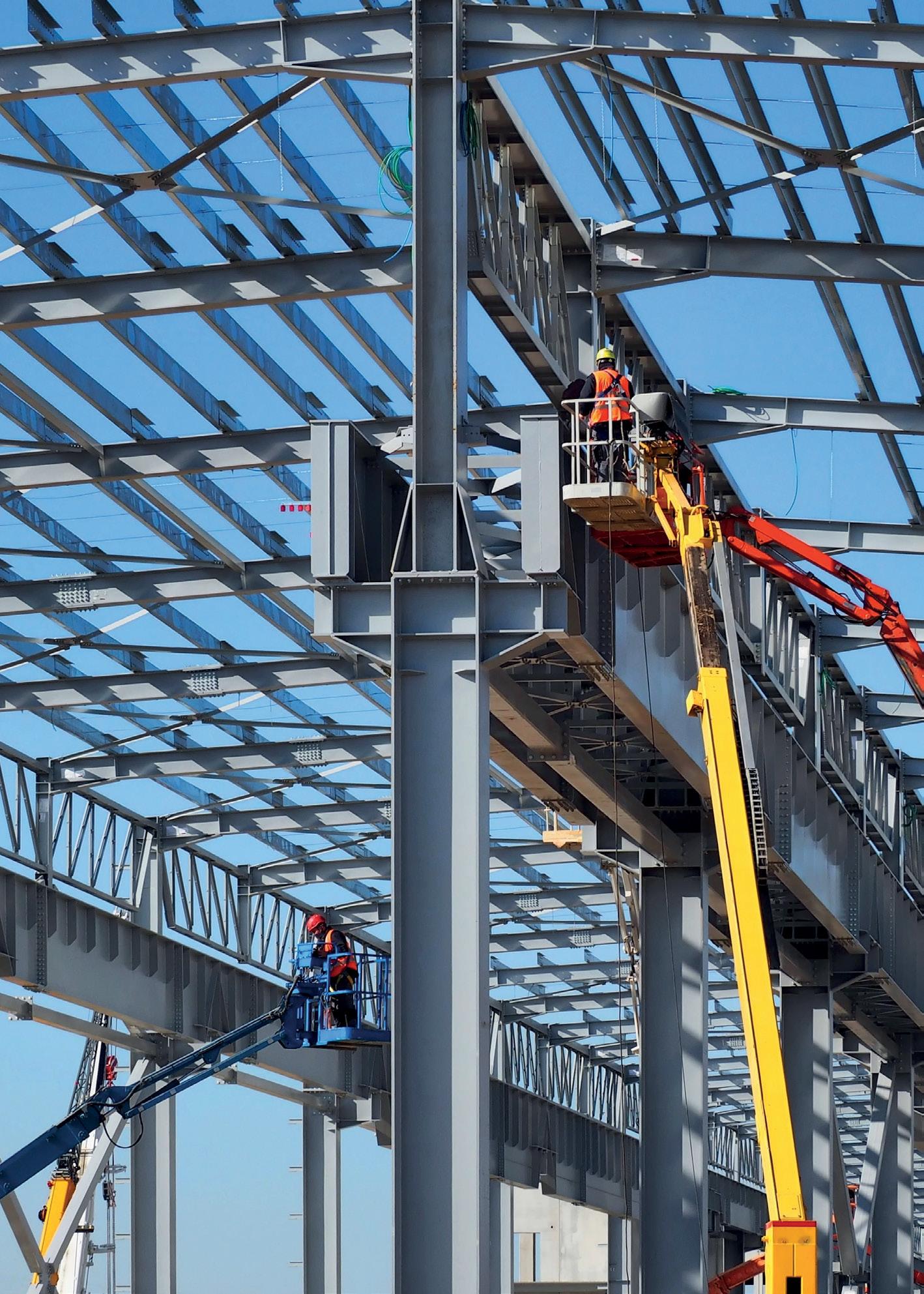
Historically,
Steel frame constructions are highly resistant to fire, reducing the fire risk to a building and retarding the spread of a fire should one occur”
haven’t been, over the years, at least one costly incident with wrongly-sized steel fabrications
3. Supporting Structures
Steel frame constructions rarely work on their own. They usually require drywall, sheathing, insulation and supplementary wooden components to bring a building together. In the opinion of some construction businesses, this longer construction time is an argument against steel frame constructions; however, there is no doubt that in the last few years, the increased use of AI and BIM technology in today’s project management means that the various extra elements can generally be brought together efficiently by the project stakeholders, on a dovetailed timeline.
May 2024 meconstructionnews.com
the largest structural spans ever completed have utilised steel frame construction.
36 | On Site

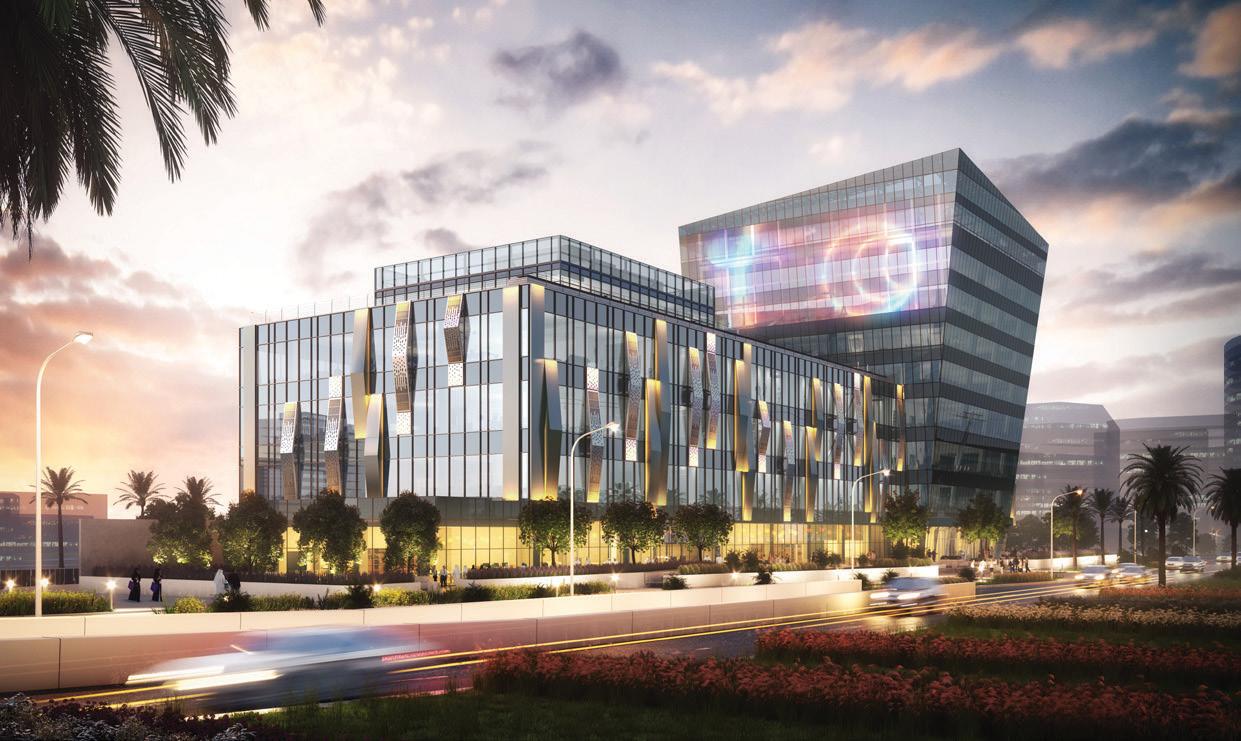
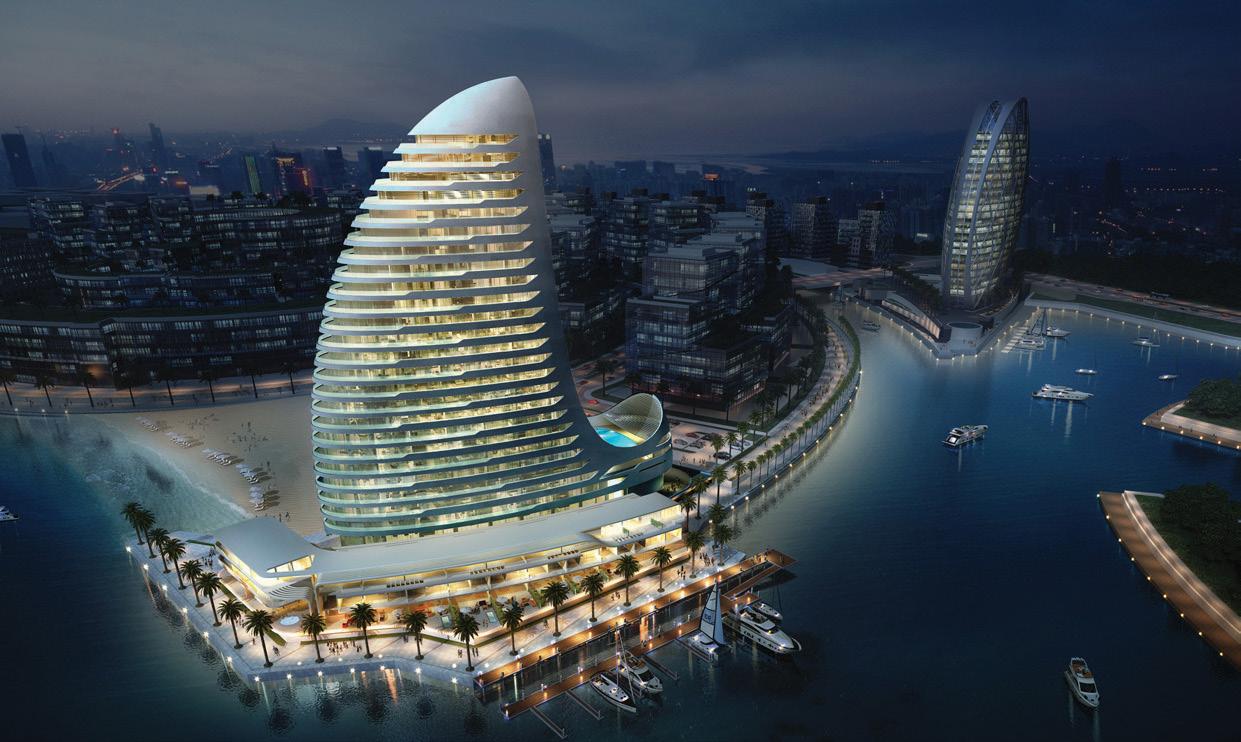

Commercial
Offices
Residential
Mixed Use
Educational Master Planning
& Leisure
Medical
Architects believes
pushing the boundaries of architecture
inspire
LEBANON KASLIK T +961 9 636 405 F +961 9 636 404 E info@mz-architects.com UAE ABU DHABI T +971 2 6350 002-1 F +971 2 6350 008-9 E infouae@mz-architects.com
work relates to spatial concepts, form and structure 7th st. - Electra - Abu Dhabi, United Arab Emirates KBC Center - 5th Floor - Kaslik, Lebanon P.O. Box 159 Zouk Mikhael
Hotels Public
Sports
Religious
MZ
in
and design to
and transform
Our
THE WORKPLACE
AND THE DAY AFTER TOMORROW

meconstructionnews.com May 2024 38 | Diversity


Countless reports and surveys have been predicting seismic change in the workplace for decades - and with the advent of hybrid working, GenAI and the new era of employee benefits, some of it is already here. Here, Neetu Choudhary describes the latest shifting dynamics and the realistic next steps that organisations need to implement if they are to thrive into the late 2020s…
May 2024 meconstructionnews.com Diversity | 39
eady or not, it’s a truism that the future is coming. This particular future is shaped by technological advancements, generational shifts, and societal changes, presenting organisations with historic challenges: we’re already seeing intense talent competition, cost pressures, and the rise of artificial intelligence and automation - but what we’re about to see is something considerably different. This isn’t a science-fiction, dystopian future - or even close to it - but it’s something that requires intensely sober reflection and strenuous preparation.
As we contemplate the future workplace, it's essential to consider what new norms will emerge and how both companies and employees must adapt. Drawing from past and present trends, we can see a number of the key dynamics set to define the future work environment. The importance of this new model cannot be overstated.
1. It's crucial because no company should be left behind. The sustainability of businesses is intrinsic to societal prosperity.
2. Likewise, no employee should be neglected due to a lack of futureready skills. Educating and upskilling individuals and teams ensures they're prepared for what lies ahead.
3. Furthermore, instilling these essential skills in school and university students is imperative to prepare them for the future work environment and ensure that they become the asset-base of tomorrow’s workplace.
So, what are the new dynamics and how are they happening?
A Gartner survey from January 2024 identifies nine emerging ‘probabilities’:

May 2024 40 | Diversity


The concept of a four-day workweek has emerged as a focal point in extensive research on performance, union discussions, and the desires of numerous employees”
this in two ways: firstly, by transparently addressing both tangible and intangible costs associated with returning to the office, or secondly, by implementing measures to reduce overall expenses.
In terms of employee incentives, such measures may encompass the likes of caregiving benefits, housing subsidies, financial wellness initiatives, on-site pet facilities, and more. It’s already happening: corporate titans like Walmart, Tyson Foods, and Numis have invested in onsite childcare facilities, while others such as IKEA, Samsung, Cook Medical, Disney, JBS, and Deloitte UK have constructed employee housing units available at rates below market value.
• The crisis over work costs reaches a critical juncture
• AI creates new opportunities for employment on a profound scale
• The 4-day workweek gains traction.
• Conflict resolution becomes a vital skill for managers; and dispute resolution/ arbitration are preferred options for previously adversarial organisations
• Experiments with GenAI lead to valuable insights and challenges.
• Skills surpass degrees in importance as barriers to advancement diminish.
• Protection against climate change becomes a sought-after employee benefit.
• Diversity, equity, and inclusion become embedded in workplace culture.
• Traditional career stereotypes crumble in response to workforce transformations.
Of course, all this won’t happen in the next 12 months; but what’s certain is that in the upcoming year, organisations aiming to attract and retain talent will not only seek the optimal hybrid work strategy but will also confront the financial burdens of continuing to employ their current levels of staff at all. They can approach
In a 2022 Gartner survey, 22% of employees anticipated AI replacing their roles within the next five years. However, despite widespread concern, GenAI is projected to minimally replace jobs in the short to medium term. Instead, affected positions are likely to undergo redesign, incorporating new tasks such as generating prompts for GenAI tools and evaluating and utilising their results. Interestingly, only one-third of employees report that their organisation has communicated how its plans for using technology may impact their job in the future.
MORE OUTPUT, LESS HOURS
The concept of a four-day workweek (4DWW) has emerged as a focal point in extensive research on performance, union discussions, and the desires of numerous employees. According to a 2023 survey from EY, 63% of respondents identified "a four-day workweek with unchanged pay" as the leading innovative benefit that would entice them to pursue a job. Employee wellbeing, work life balance and mental health are priorities now for individuals and companies.
A future of work centred on human well-being is crucial for productivity, yet it requires acknowledgment from business leaders. Priorities should encompass fostering positive outcomes for both employees and employers,
May 2024
Diversity | 41
promoting flexibility, and ensuring equitable treatment. Human-centric work environments significantly reduce fatigue, and enhance employee retention and performance.
A plethora of factors, from geopolitical tensions to climate crises and ideological divides, contribute to a high potential for employee conflict. We know from a highly influential survey on team attitudes (McKinsey, 2019) that in the United States, for example, the average alignment between team member on socio-political issues is less than 26%. Such latent conflicts, spanning all levels, detrimentally affect both individual and collective performance, with lasting repercussions on interpersonal dynamics. Managers adept at handling both overt and
Neetu is a specialist consultant on key work-related issues, such as leadership coaching, stress management and organisational competitve advantage.
Organisations are breaking down the traditional barriers by adopting skills-based hiring, even for roles previously deemed degree-dependent”

covert conflicts will wield considerable influence over organizational harmony and productivity.
WHAT ABOUT GENAI?
Excitement, anticipation, and a compelling fear of being left behind are compelling executives to advocate for the integration of GenAI in their teams and organisations. Yet, without adequate risk mitigation measures, the deployment of GenAI is prone to result in challenging lessons and significant costs for many businesses. While the potential benefits of GenAI, particularly when applied to internal documents, are considerable, the associated risks necessitate proactive management by organisations across the board.
Yesterday's job descriptions prioritised college degrees, but today's landscape is evolving rapidly. Organisations are breaking down the traditional barriers by adopting skills-based hiring, even for roles previously deemed degree-dependent.
Leading companies like Google, Delta Airlines, Zoho, and Accenture have already eliminated degree requirements from their job listings to attract a broader pool of qualified candidates and remain competitive in the talent market. Amazon and EY are increasingly promoting their internal universities and business schools as customised credential programmes aimed at equipping talent with the precise skills necessary for career advancement. Similarly, companies like Siemens, IBM, and HP have broadened their registered apprenticeship initiatives in the United States. Meanwhile, in the European Union, there's been a surge in shared apprenticeship programmes, enabling smaller organisations unable to meet individual training needs to collaborate in creating comprehensive training initiatives tailored to develop talent with specific skills.
The climate is changing, so the workplace and policies need to accommodate these changes. During the winter of 2022, more than 40% of

May 2024 meconstructionnews.com 42 | Diversity


European organisations implemented discount schemes or modified pay structures to mitigate the effects of energy price increases. With climate changerelated events becoming increasingly widespread and enduring, executives will need to devise innovative strategies to manage their impact on employee productivity, retention, and recruitment. Organisations will best capitalise on this opportunity by enhancing transparency and clarity.
KEEPING THINGS SAFE - AND INCLUSIVE
On another level, companies worldwide are increasingly prioritising explicit commitments to physical safety, including proactive plans for shelter and provisions during natural disasters. Compensation initiatives, such as designated PTO (Paid Time Out) or monetary benefits, are being offered to employees affected by climate-
We will no longer talk about the role of AI as influencing corporate futures, but rather see the entirety of commerce as a product of highly advanced AI.
related events, along with subsidies for housing and relocation assistance. Additionally, mental health support, including access to grief counsellors, is becoming more prevalent to help employees cope with the uncertainty of a changing climate, particularly beneficial for organisations with localised operations.
Despite the uncertainty, there's a shift towards embedding DEI throughout organizations, transitioning from a siloed approach to an integrated model. This new paradigm involves consulting DEI leaders in functional areas to co-create solutions, and integrating DEI principles into daily
operations to achieve strategic goals and enhance business value.
All in all, the reality is this: in response to evolving career preferences and involuntary disruptions, organisations must break stereotypes by offering non-traditional employment models, decoupling expertise from tenure, and preparing for the retirement of experienced workers through cross-training and internal rotation programmes. This shift towards atypical career paths requires organisations to adapt their talent management strategies to ensure effective talent acquisition and retention.
This future may be very different - but it is far from being unmanageable or unexpected. Of course, the reality is that those who embrace this future and its farreaching demands the soonest will emerge as the new Champions of the late 2020s. Will you be one of them?
meconstructionnews.com May 2024
Diversity | 43
CULTURAL INTELLIGENCE & CLIENT CONSULTANCY
Following on from our close-up look at Cultural Intelligence - what it is and why it matters - in our February issue, here we examine how to use these skills successfully across the raft of client interactions, creating a positive context for consultancy and sales.
Emma Jordaan, CEO, Infinite Consulting, explains what (and what not!) to do…
of different nations and cultures. Sales teams that embrace this diversity are better equipped to navigate uncertainty, volatility, and cultural shifts, allowing them to stay ahead of the curve in dynamic international markets. What’s more, they’re more likely to bring you the new levels of sales revenue you’re looking for.

he world is becoming more globalised by the minute, due to both technological innovation and more affordable and ever-easier international travel. Organisations can easily advance into new markets and new territories. Advancement in new markets, however, will often mean that the commercial team are likely to be dealing with clients from - literally - all over the world, which means liaising with and handling clients
The question is: how do we build strong relationships across diverse cultural contexts to ensure communication effectiveness and customer satisfaction? There is a great variation in the relevant sales techniques used across various cultures; what works well in the UK, may not work so well in the UAE. Knowing what will captivate the attention of the client is key to succeeding in cross-cultural sales. Navigating negotiations across
meconstructionnews.com May 2024
44 | Diversity


May 2024 meconstructionnews.com Diversity | 45
different cultures can take patience and perseverance. Being able to understand the cultural norms of the person you are negotiating with - and how those norms influence their choices and buying habits - can ultimately have a positive outcome, enabling you to better plan ahead for your sales negotiation. This is called Cultural Intelligence, the ability to understand and adapt your approach to suit your clients’ cultural preferences and expectations so that you can produce the maximum commercial outcomes for their organisation.
With this in mind, where should we start?
The sales cycle across different cultures can be entirely different in terms of the way that relationships are established, the way that negotiations take place, the length of time that elapses and differing buying signals and decision making. It is therefore important that business professionals can navigate these cultural nuances effectively when engaging with the client. Not to mention the consideration of the different communication styles observed, the different service offerings, cross cultural
Ever wondered why it went wrong? Assumptions and presumed USPs are simply not always cultural constants...
expectations and conflict management. Cultural misunderstandings can lead to significant challenges and even end in disastrous consequences for organisations. There are all too many instances where cultural differences have resulted in misinterpretation, and ultimately lost business opportunities.
So, let’s have a look at how culture can influence your client handling and liaison.
THE SALES & CONSULTANCY DYNAMIC
In order to conduct business with a client, there needs to be a level of trust established first between the salesperson and the client. However, trust is itself something that is built and earned differently across diverse cultures. So, focusing on interpreting how your client builds trust first and foremost will set you up for positive interaction and potentially
a long-lasting relationship with the client. In some countries, trust is built based on relationships; hospitality is highly valued and the emphasis would be placed on building a rapport with the client, getting to know them on a personal level. Face to face interactions with the client are vital and business discussions would take a back seat to first building the personal relationship. The first meeting may exclusively be a meeting to help establish relationships and get to know one another rather than discussing business.
Alternatively, some cultures build trust based on task. There will be less focus on small talk or relationship building and more emphasis on whether you seem like a competent person, what your CV says, and the qualifications you have. Task- oriented people typically conduct minimal small talk, wanting most of the meeting to be conducted around the business proposal. After all, as far as they are concerned, that’s the whole purpose of the meeting in the first place.
Whatever the approach that’s favoured, it may be frustrating for salespeople who naturally work in a way that’s diametrically

May 2024 meconstructionnews.com
46 | Diversity
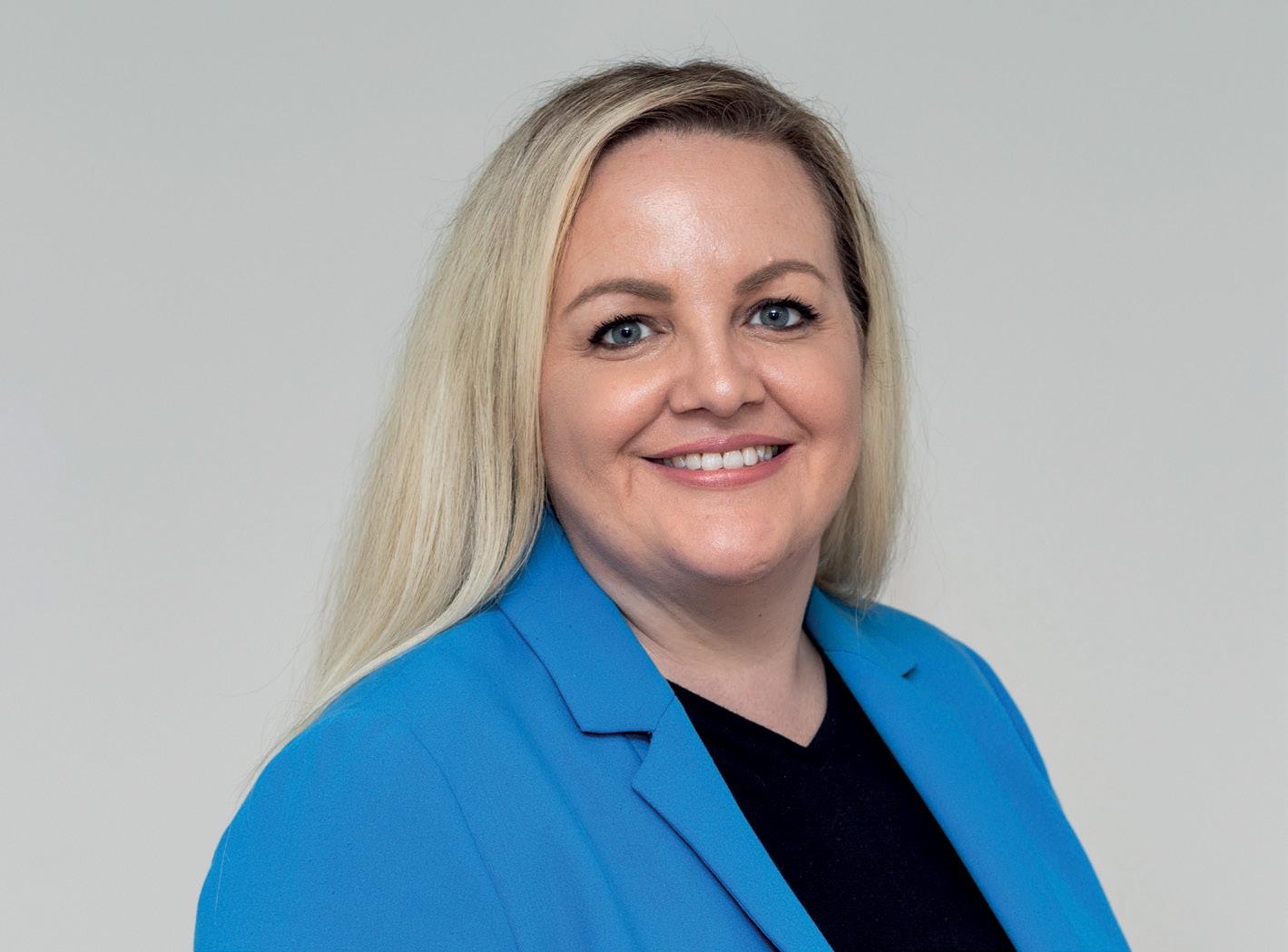
opposed to their client’s preferences. For example, in the case of relationshipfavoured settings, doing business certainly takes time. The speed at which business deals are agreed might be longer, however, hurrying this process can show a complete disregard for culture and appear disrespectful to the client.
On the other hand, task orientation may feel disingenuous to a relationshiporiented client. Relationship- oriented cultures may even want to conduct business over lunch or an evening meal. To ensure a positive social interaction with a client, it’s important to have familiarised yourself with the cultural norms and etiquette of their culture. The client may not wish to sit with others over a meal if that means an environment with alcohol or loud music. Recognising the client’s preferences and adapting appropriately demonstrates attentiveness to the client’s needs.
Remember, too, that these are not ‘on’ or ‘off’ scenarios. So, if you are relationship oriented, don’t think that you can’t invite task-oriented clients out to lunch. If you do, just be clear on the duration of the lunch and try to stick to an agreed length of time. If you are task oriented, recognise that the lunch appointment will potentially go on longer than the planned one-hour appointment.
VALUING TIME DIFFERENTLY
Even time is valued differently across cultures. Some cultures have a more fluid and flexible approach, valuing relationships over punctuality. This might mean meetings could be changed at the last minute or overrun to focus on the required time to build the relationship. If you are working with clients like this, it’s probably wise to allow for larger
To ensure a positive social interaction with a client, it’s important to have familiarised yourself with the cultural norms and etiquette of their culture”
gaps between client appointments to enable meetings to extend if necessary or to allow for meeting’s start times to potentially be delayed. It’s important to demonstrate patience and flexibility when working with clients from these cultures, i.e. being willing to adjust your calendar to accommodate any changes.
In other cultures, punctuality is highly valued, and meetings should start on time to avoid keeping people waiting as this could appear disrespectful and indicate an inability to self-organise. If you are going to be delayed for a meeting, then it’s important to ring ahead and advise of the delay rather than arriving late with no pre-warning.
Effective communication is key when it comes to client liaison, and cultural intelligence plays a pivotal role in recognising what would be the most appropriate communication style to adopt with your client. Some cultures tend to be more direct in the way that they communicate. This can mean that the message is very explicit and clear, and the person might repeat themselves a little to ensure understanding. In other cultures, communication may be more indirect, so understanding nonverbal cues and reading between the lines is essential to be able to interpret the feedback and preference of the client. Messages are often implied but not necessarily expressed through words. Client messages can be tough to decode if they are indirect because you may have limited social contextual understanding of the culture to really be able to interpret body language or gestures. In these circumstances, a good tip is to ask more questions to gather an overall picture of what the client is saying to you through the collective of the answers. It’s wise not to take the first response as confirmation and instead gain further clarity. In addition, the client may not always want to respond with negative feedback so they may opt to avoid sharing their true views on your proposal or demonstrate non-commitment. For example, if you have two proposals on the table, an indirect communicative client
meconstructionnews.com May 2024
Emma Jordaan, CEO of Infinite Consulting, an organisation that specialises in designing customised Cultural Intelligence (CQ) training and coaching and assessment solutions to help organisations navigate the complexities of a diverse workforce.
Diversity | 47
is unlikely to communicate their dislike towards one offer or share their negative feedback. Instead, they will likely provide positive feedback on the proposal they prefer and say nothing about the other. In this scenario, it would be down to the commercial team to read between the lines and recognise that the lack of feedback on the one proposal means that it isn’t the preferred one.
EMOTIONAL IMPACT
Across cultures, emotions can also be demonstrated to varying extents. This can impact the client’s communication too, which can make it difficult to gauge what the client is really thinking and feeling. Where it might be culturally acceptable to display emotions, there would be an expectation to demonstrate authenticity and transparency and show empathy towards the clients’ needs and requirements. Alternatively, some cultures have a ‘saving face’ mentality which means displaying emotions such as frustration or anger openly may be perceived as inappropriate and disrespectful. Professionals must exercise restraint and maintain composure even when faced with challenging situations. It’s important to remain polite, show diplomacy, and for harmony to be maintained to preserve the client relationship.
Additionally, the level of control over one’s emotions is also different across cultures. Some cultures may show genuine enthusiasm and passion for their work, and it helps to show a level of warmth towards the client to help build strong relationships. Other cultures prioritise restraining emotions and prefer to show self-control; displaying feelings can be perceived as incompetence and weaken professional credibility. So, when it comes to potential conflict because the client is unhappy with the deal or situation, in some cultures it would be plainly obvious because the client would feel the freedom to express their dissatisfaction.
A key part in closing the deal, is being able to interpret the clients’ buying
Cultural Intelligence training can serve as an invaluable tool to equip sales teams with the essential skills and knowledge required to navigate the complexities of diverse cultural interactions successfully”
signals. It is useful to know that a ‘winwin’ mentality in terms of the outcome of the negotiation isn’t a view accepted globally. Some cultures believe you should focus on a ‘win-lose/lose-win’ outcome because negotiation is viewed more as a confrontation. Additionally, some cultures tend to show restraint in being too eager to proceed with the deal. Where the client is not direct in the way they communicate, it may be hard to determine whether the client is genuinely interested in proceeding with the deal, or where they may not want to give too much away. In these circumstances, to help interpret some of the social contextual buying signals, you should pay attention to things like the frequency of the client’s interactions, or repeated enquiries. They will also actively engage in the sales process by willingly attending additional meetings or asking questions, so pay attention to the level of engagement. Building Cultural Intelligence is an ongoing process.
The level of motivation (CQ Drive) fuels an individual’s willingness to engage with clients from different cultures. This could be through an intrinsic interest where they are passionate about different cultures, or through an intrinsic interest because they see the genuine benefit of understanding their client’s
culture better. CQ Knowledge is about observing different cultures' similarities and differences when it comes to sales, in order to anticipate and navigate cultural nuances effectively. This can be actioned through CQ Strategy, which is to plan your approach ahead of time. You should consider the appropriate communication and negotiation styles to use and know how to interpret subtle buying signals. It’s the readiness and willingness to adapt to your clients’ interactions, build trust, and mitigate cultural misunderstandings. This is followed by CQ Action which is when an individual exhibits confidence and competence in navigating cross-cultural interactions, where you can anticipate, and address client needs and concerns spontaneously and authentically. Cultural Intelligence is a skill that can be developed and honed over time, making it an area of continuous learning. The extent to which individuals or organisations engage in Cultural Intelligence training and coaching ultimately depends on their enthusiasm to grow in this area. Far too often, people don’t recognise the relevance of cultural issues, assuming that clashes, misunderstandings or lost sales opportunities are down to other issues. Blaming it on personality clashes or customers’ needs to change. Cultural Intelligence training can serve as an invaluable tool to equip sales teams with the essential skills and knowledge required to navigate the complexities of diverse cultural interactions successfully. In addition, organisations can offer opportunities such as international projects, which can significantly enhance teams’ perspectives and allow them to deepen their understanding of diverse cultural contexts. This enables them to gain firsthand experience and insights that contribute to their Cultural Intelligence development. Clients appreciate working with sales teams that understand and respect their cultural values and preferences. Strong client relationships translate into increased loyalty, repeat business and positive recommendations.
meconstructionnews.com May 2024 48 | Diversity
Ÿ
Ÿ
Ÿ
Ÿ
Ÿ
Threat & Risk Assessment
Gap Analysis
Security System Design
IT/AV Design
Master Planning & Development
Operational Requirements Ÿ
Testing & Commissioning
Control Room Design
System Integration
Policies & Procedures
Site Surveys & Audits
Crisis Management

Ÿ
Ÿ
Ÿ
Ÿ
Ÿ
Ÿ
























 Editor, Middle East Consultant
Editor, Middle East Consultant



































































